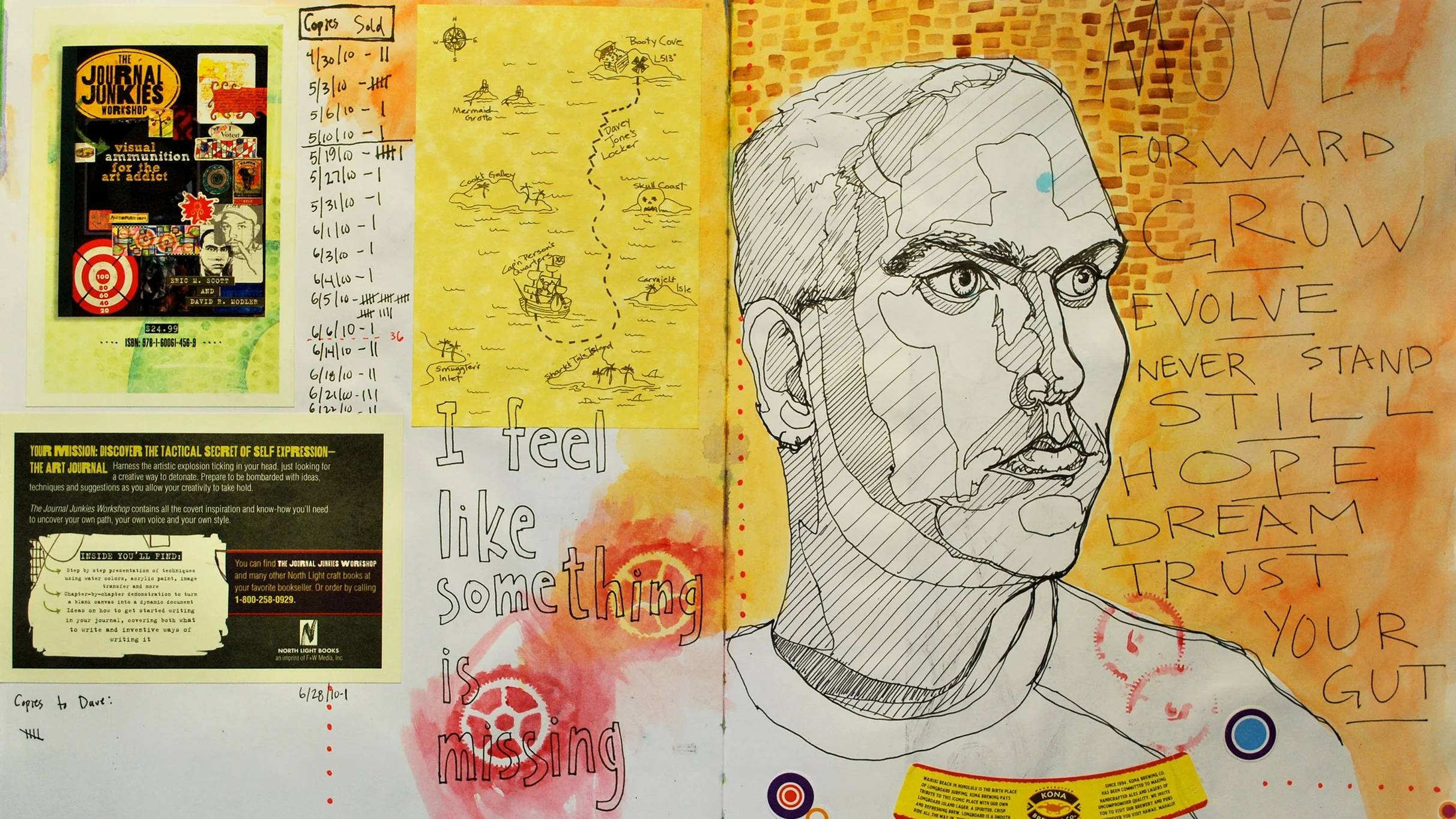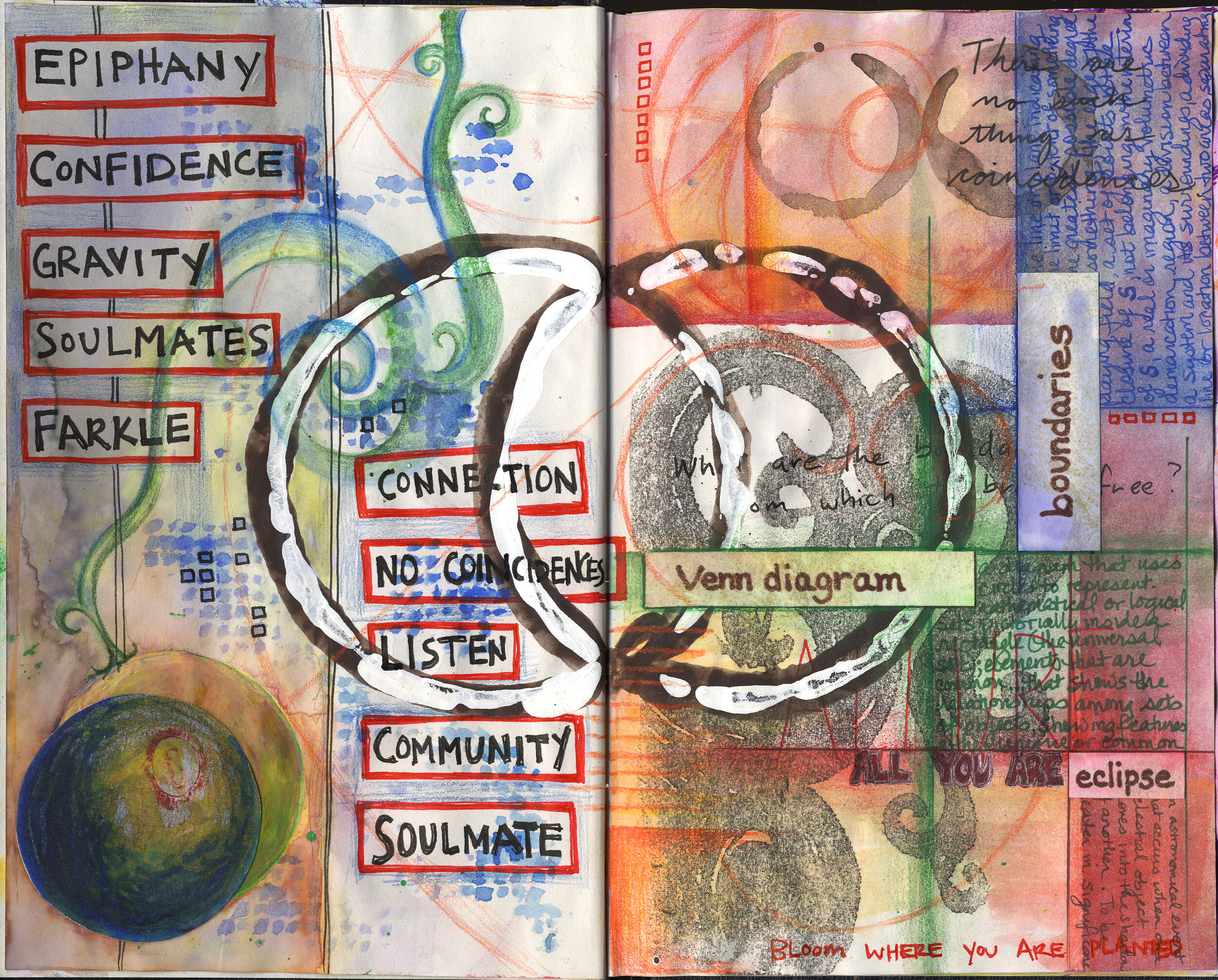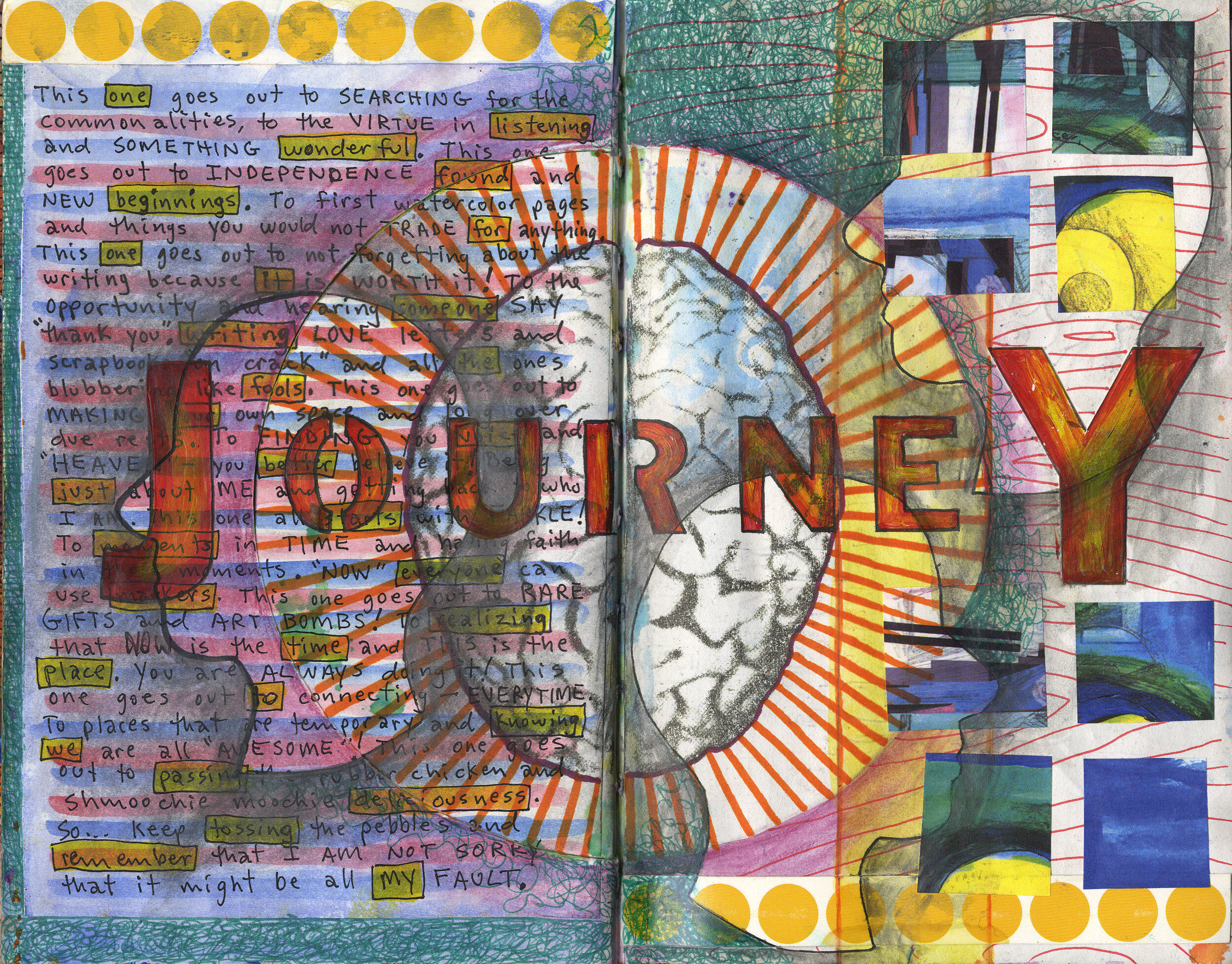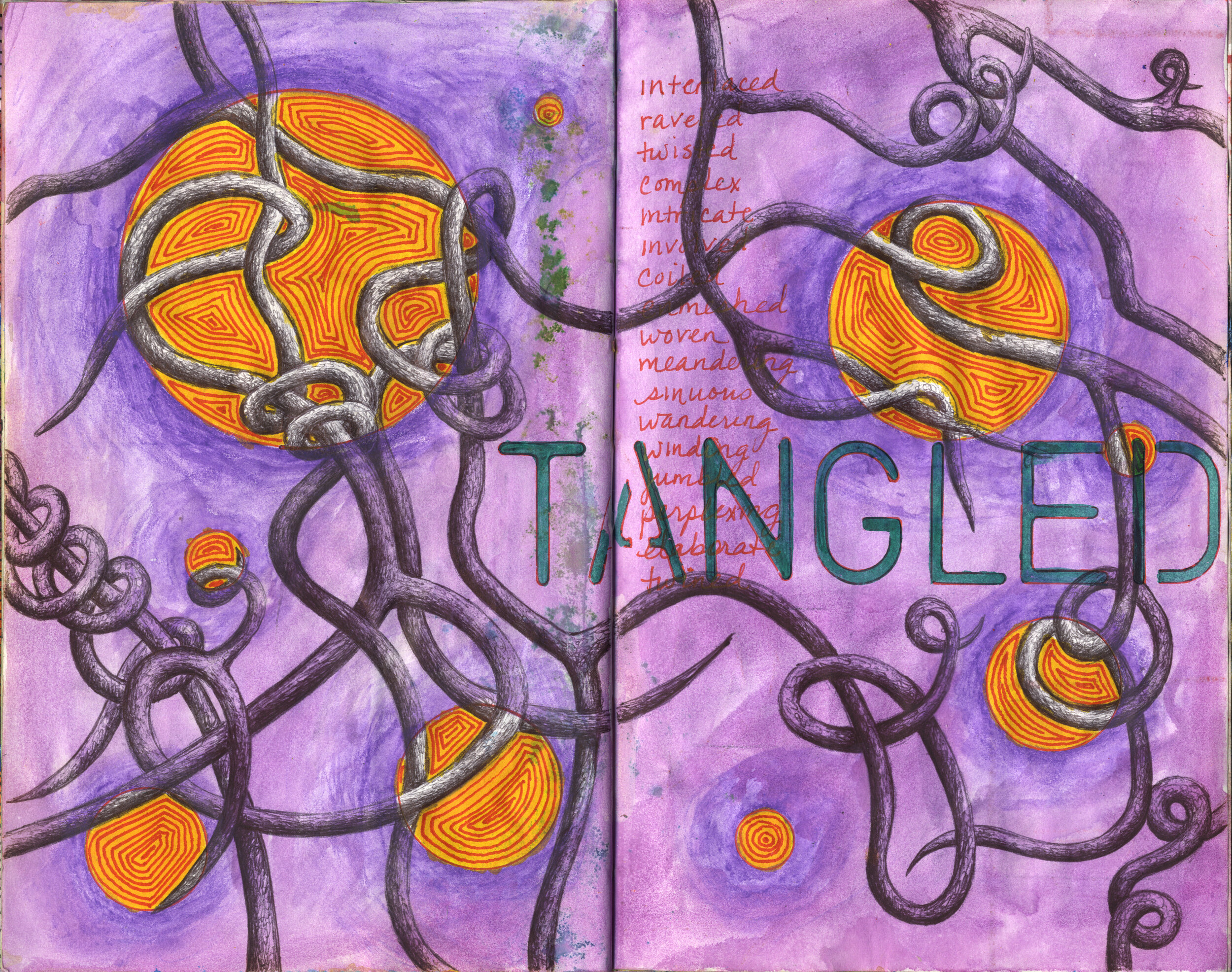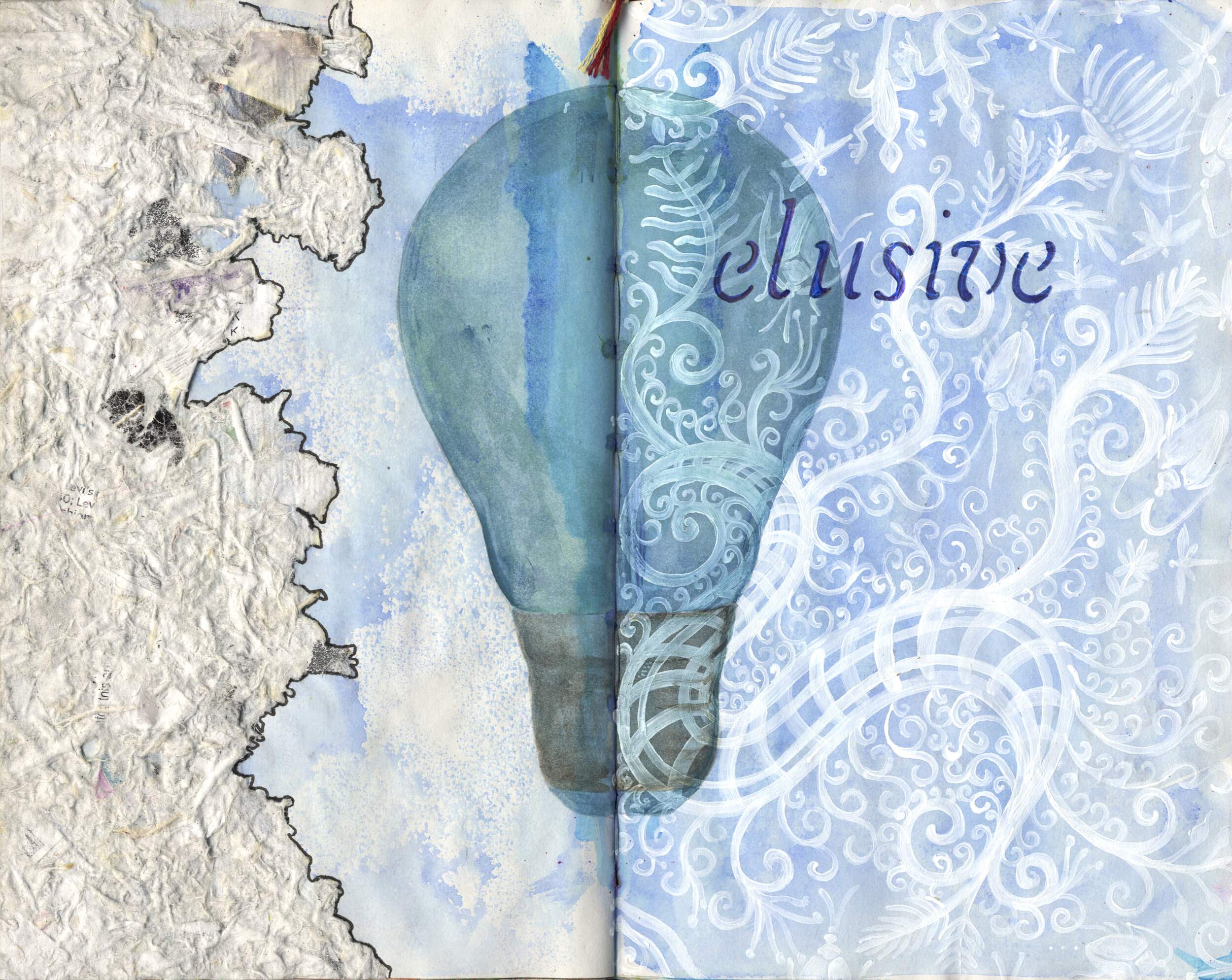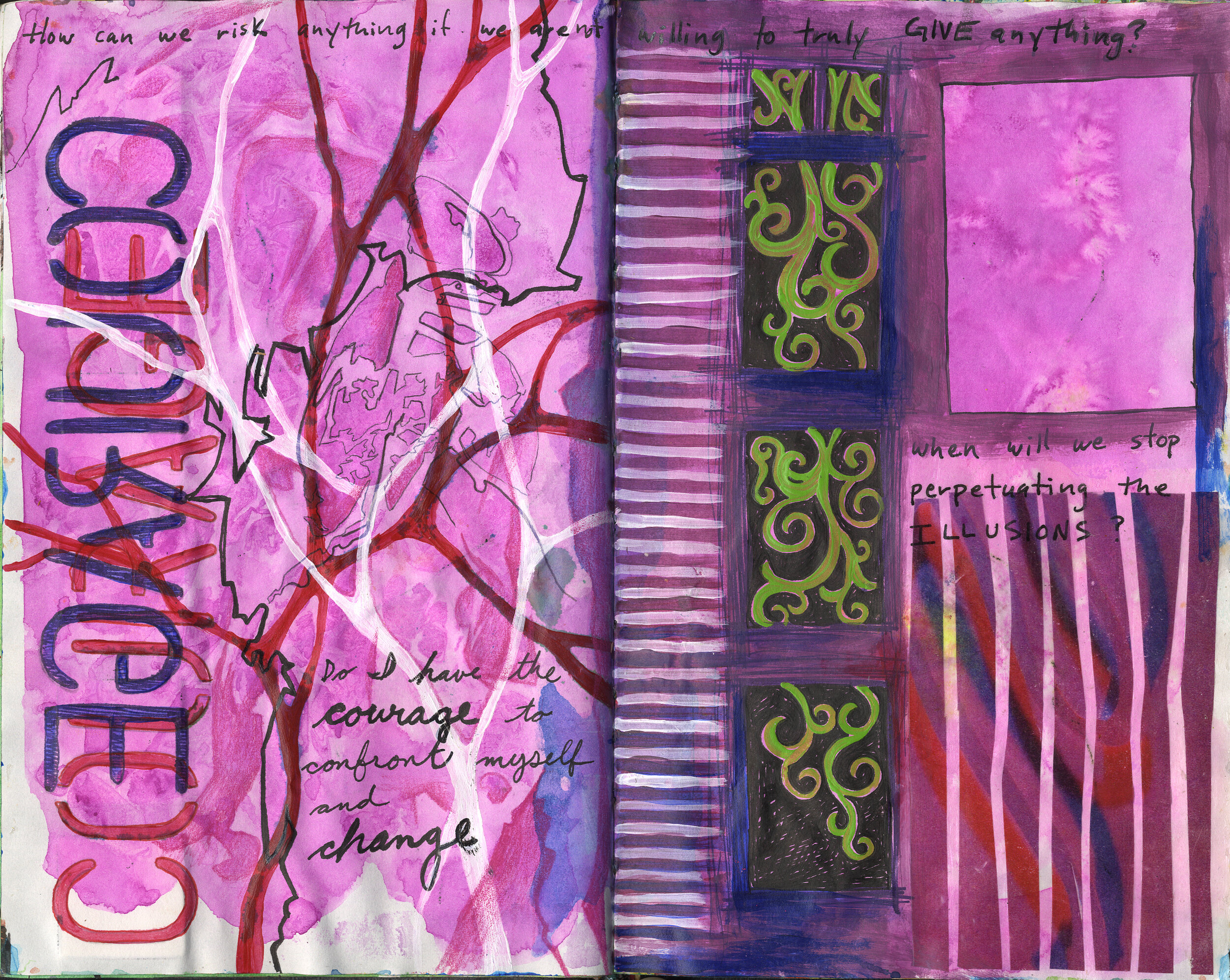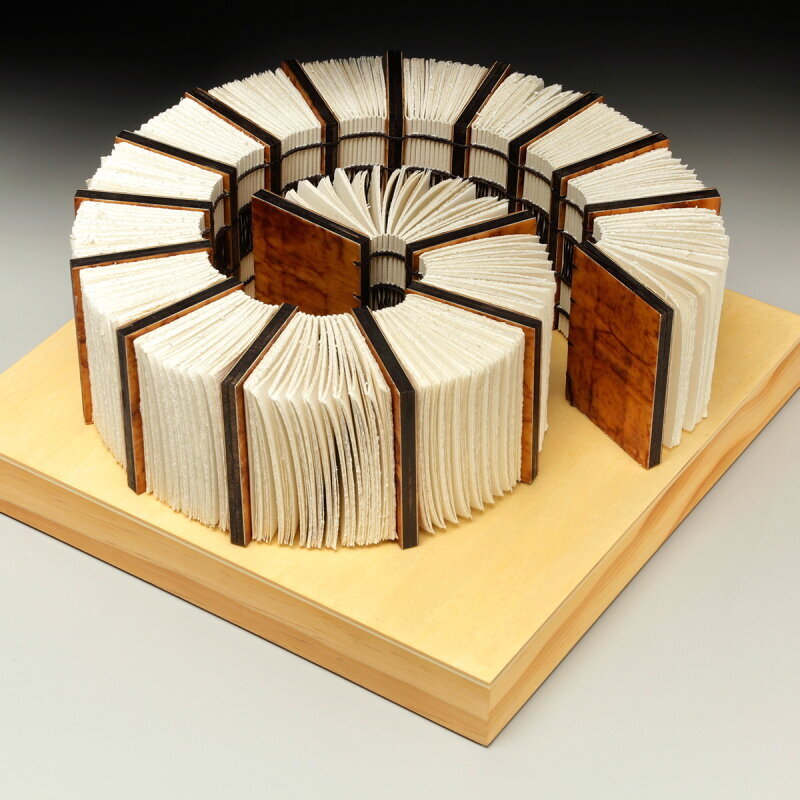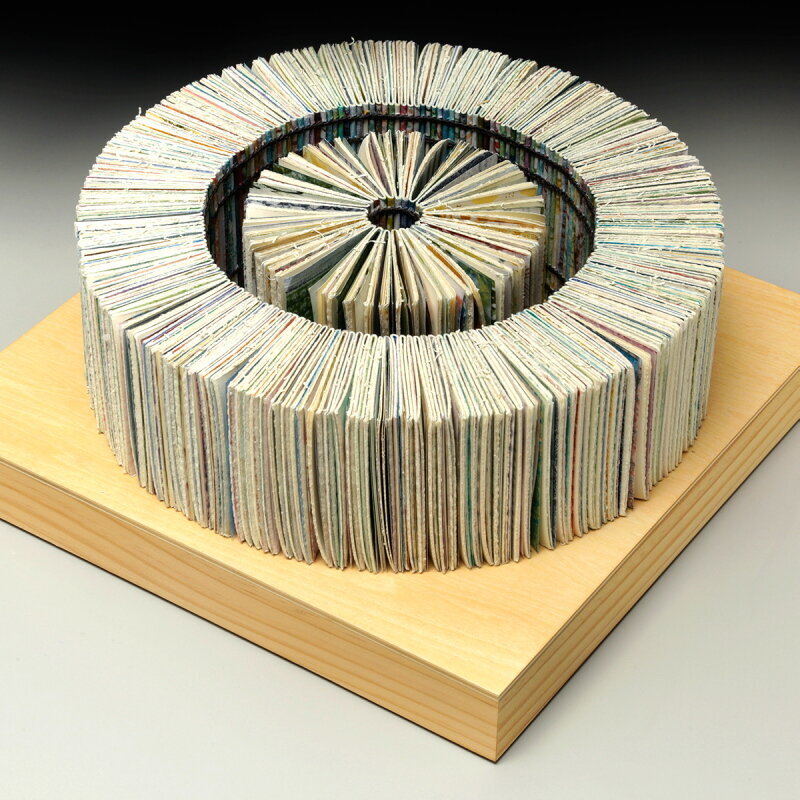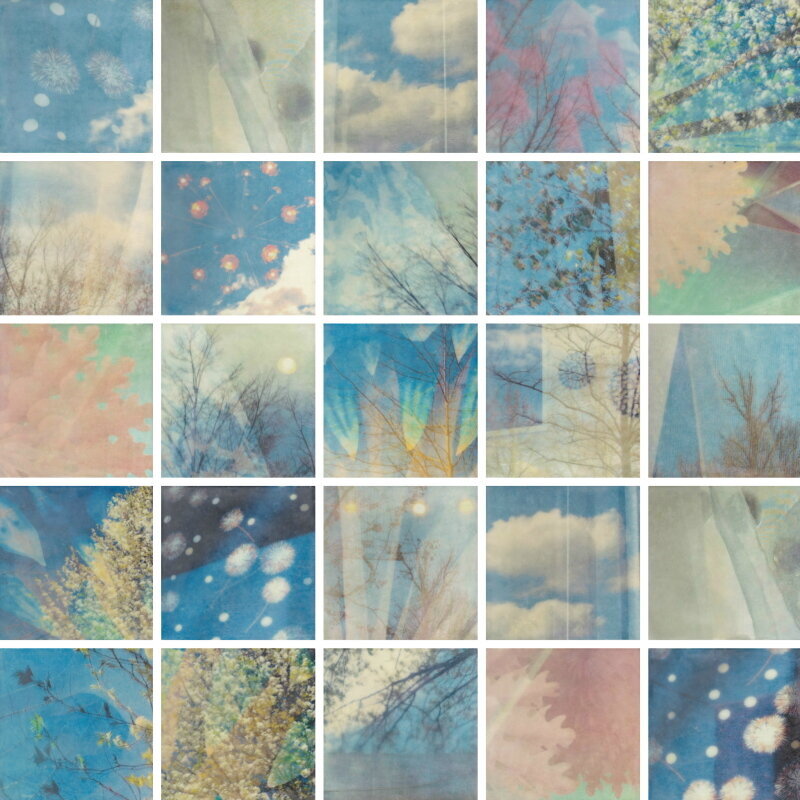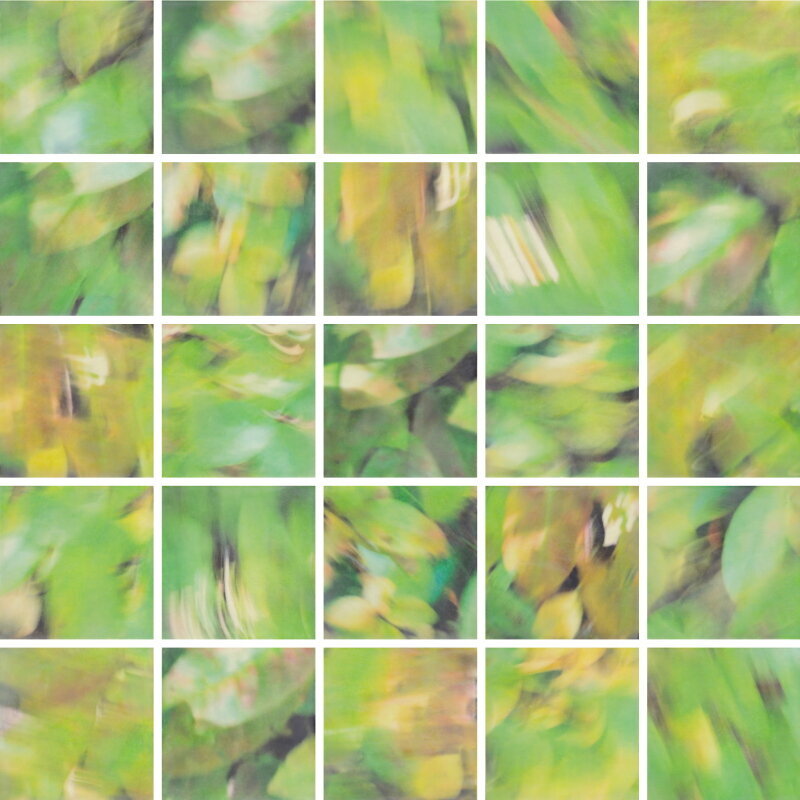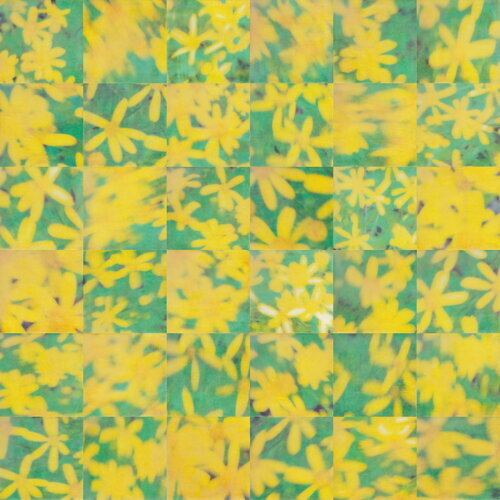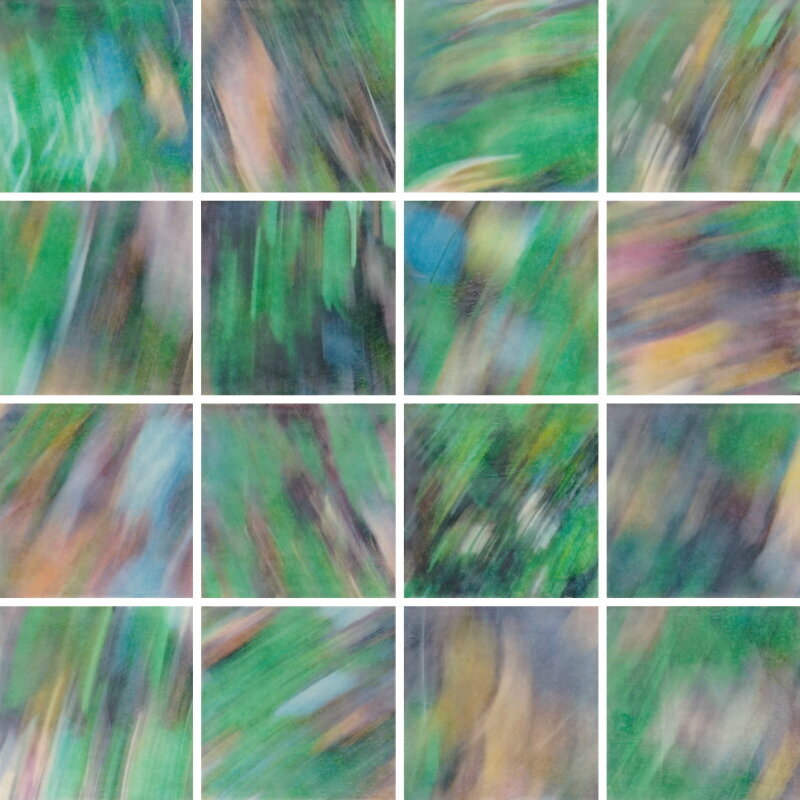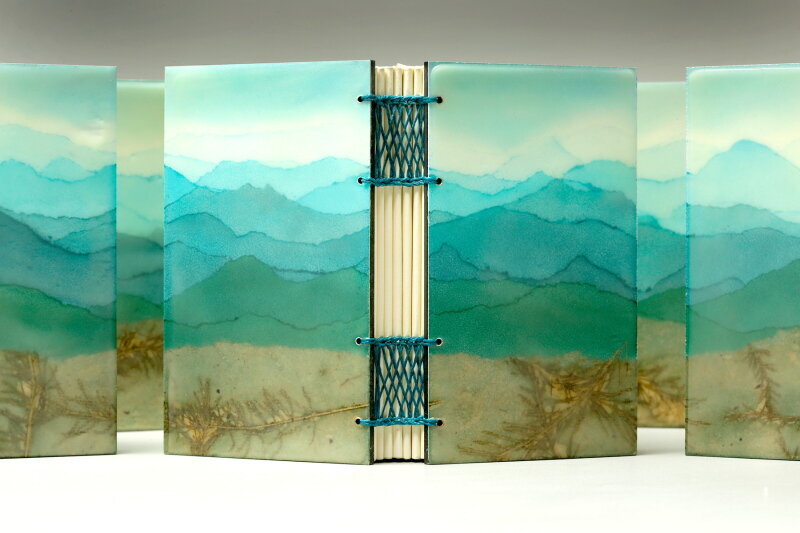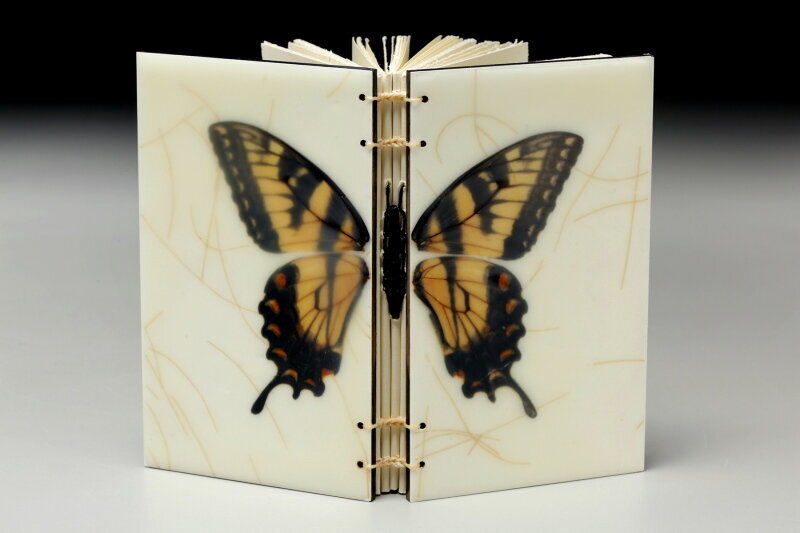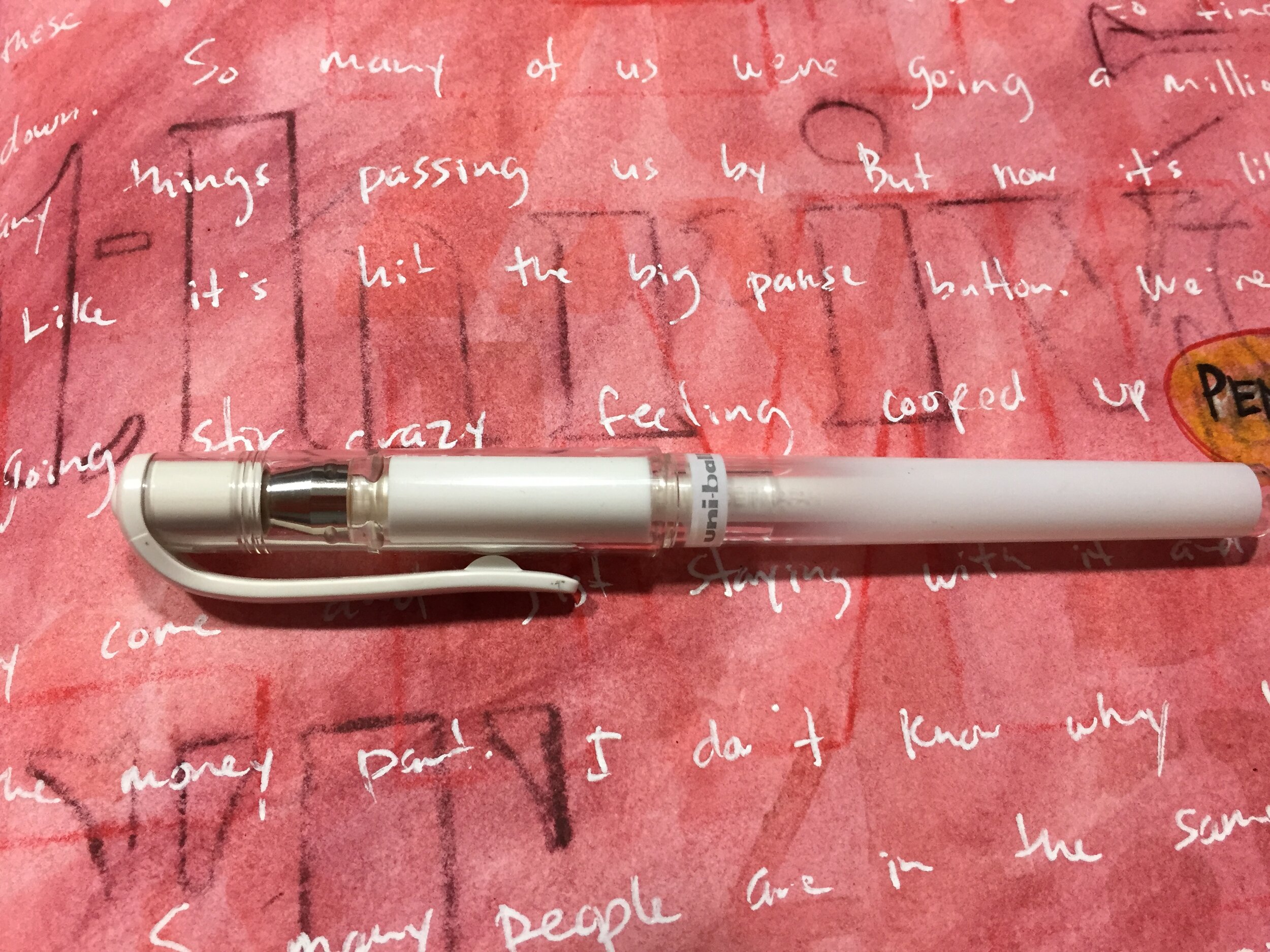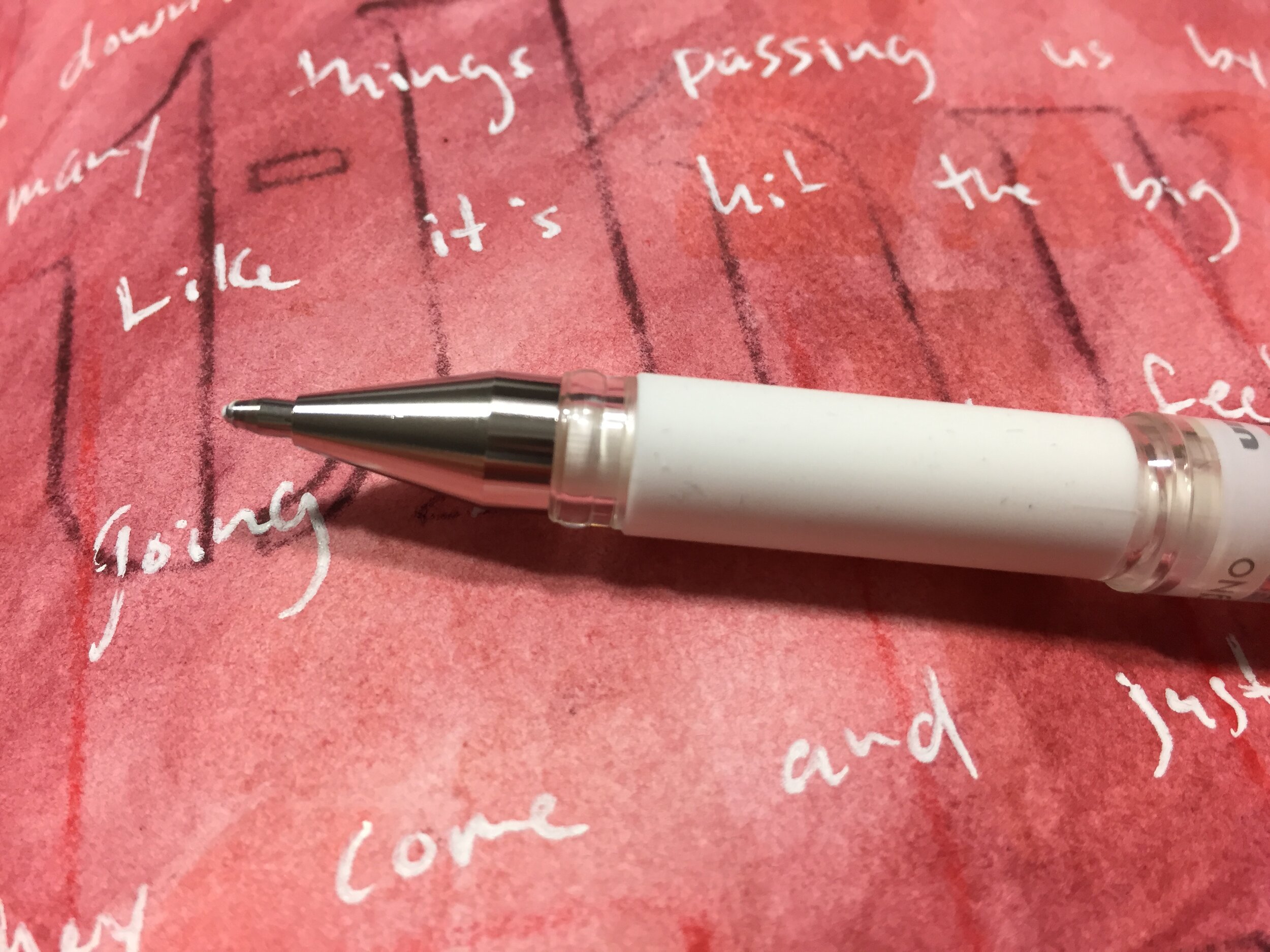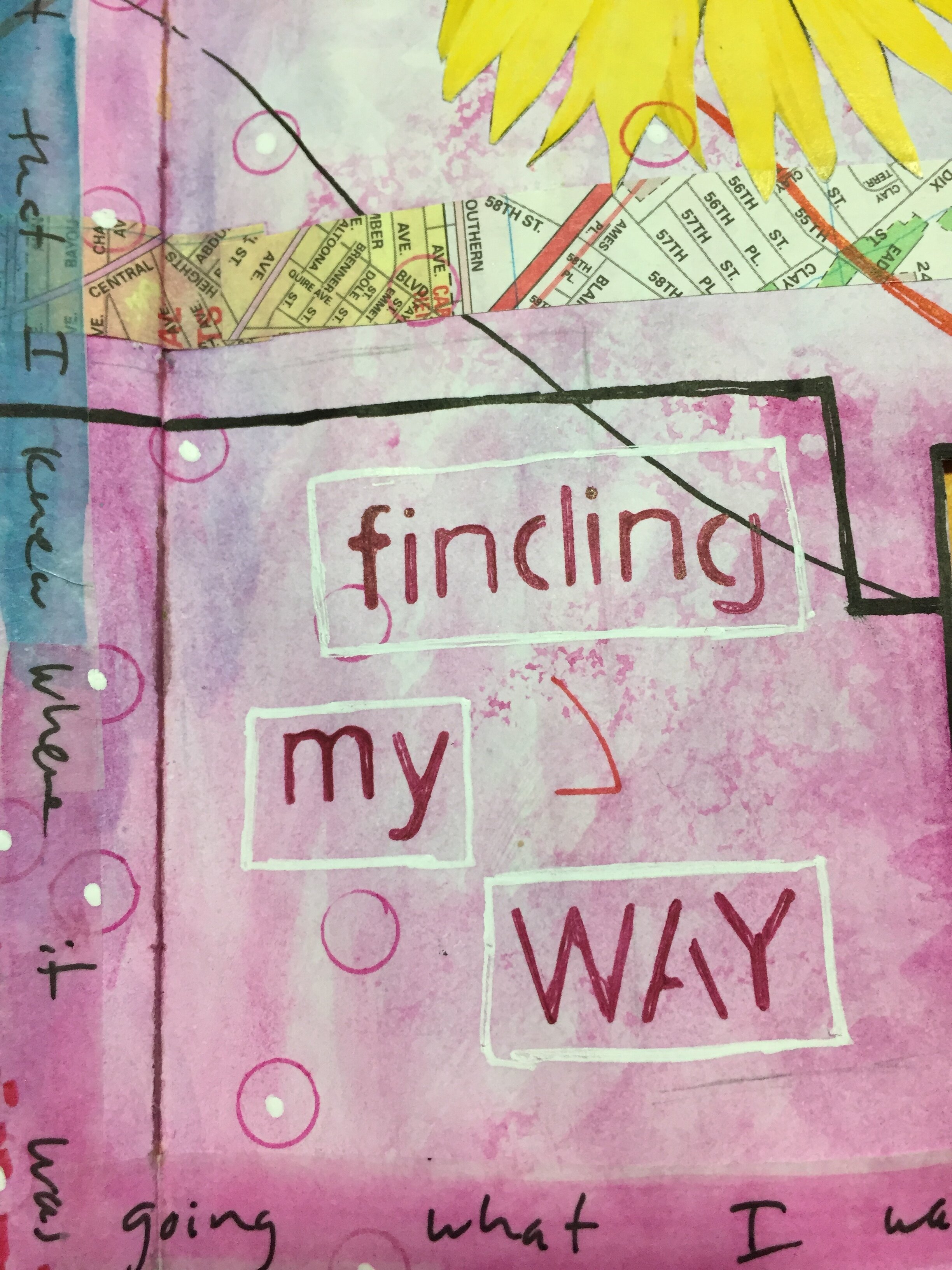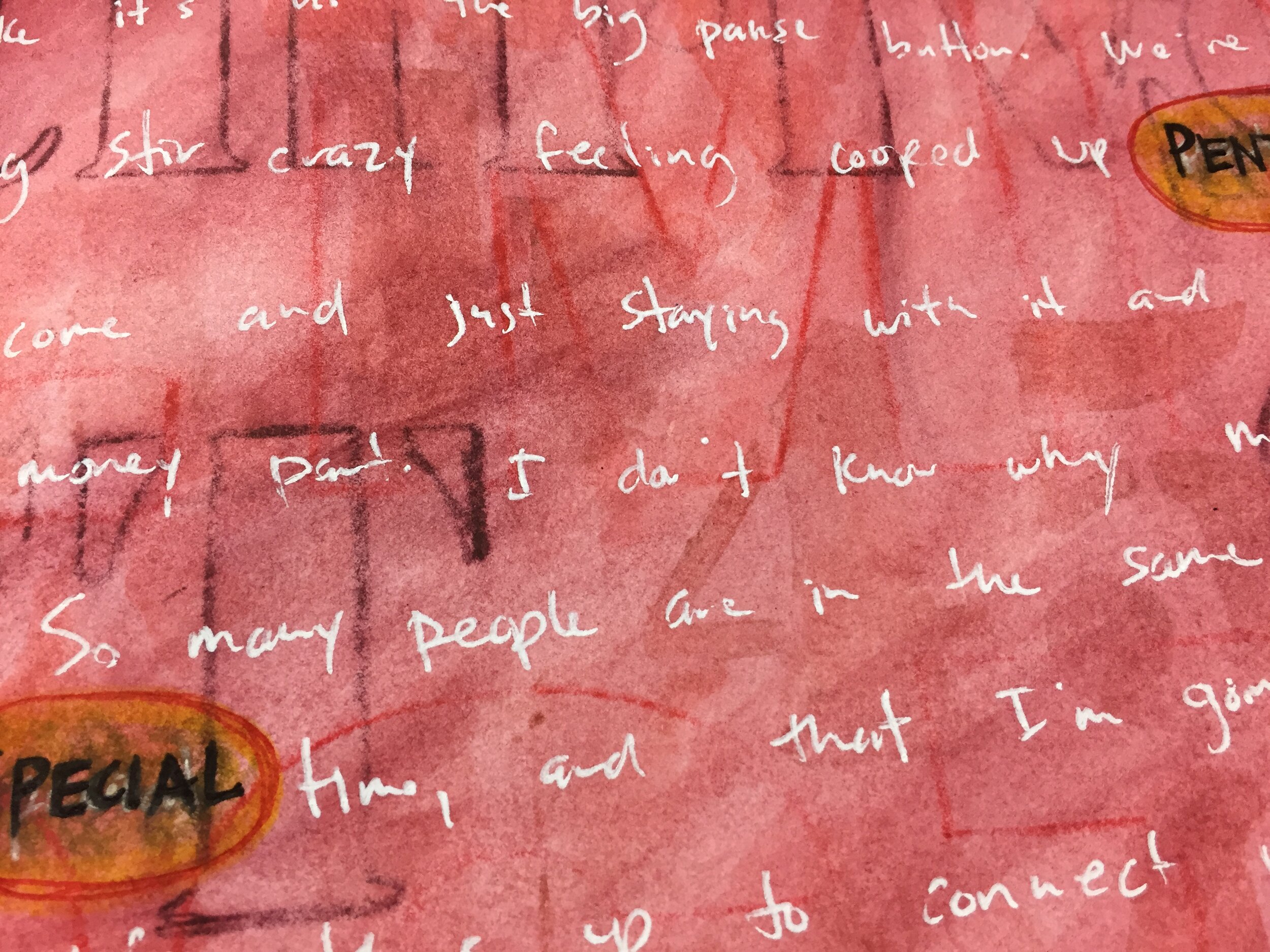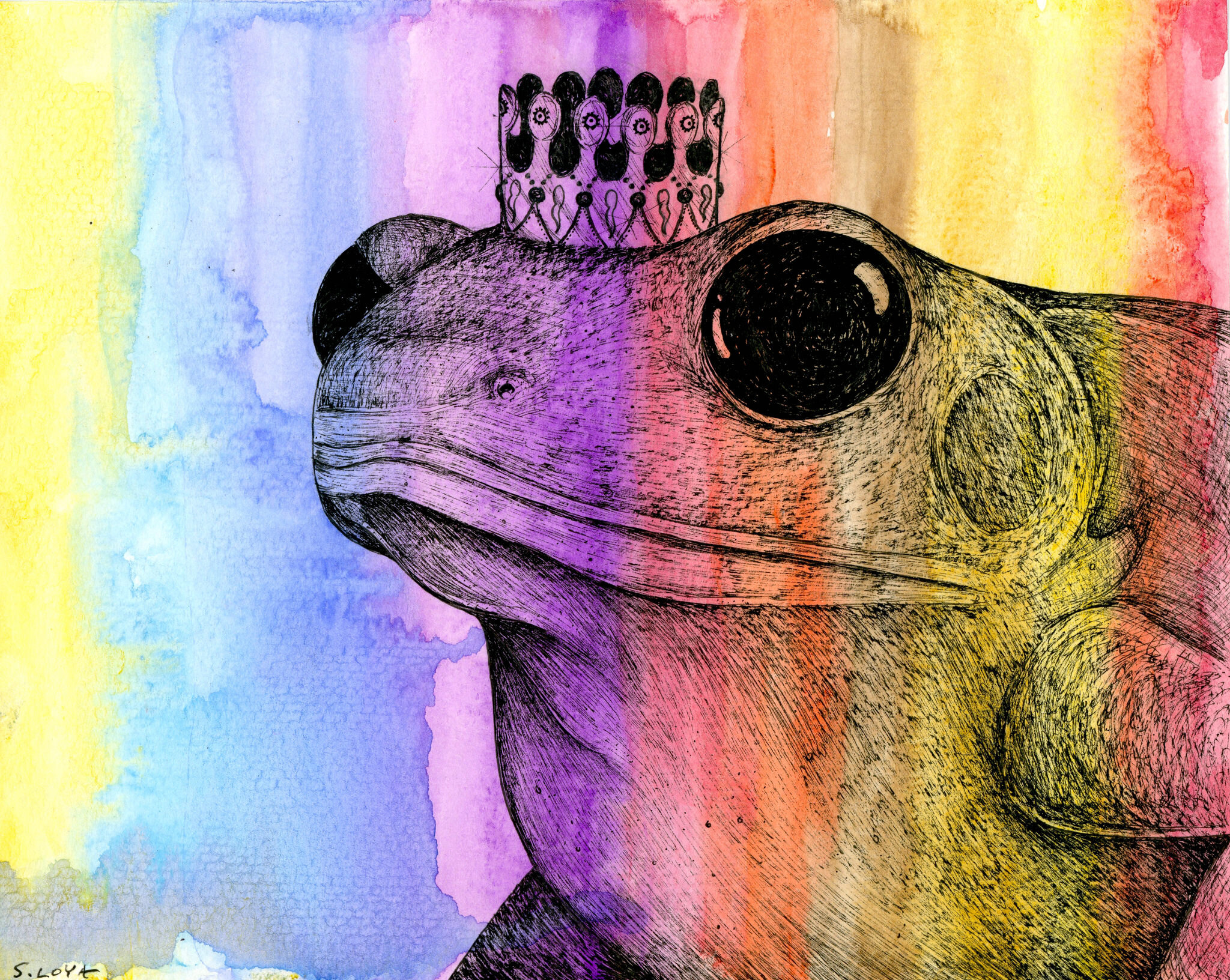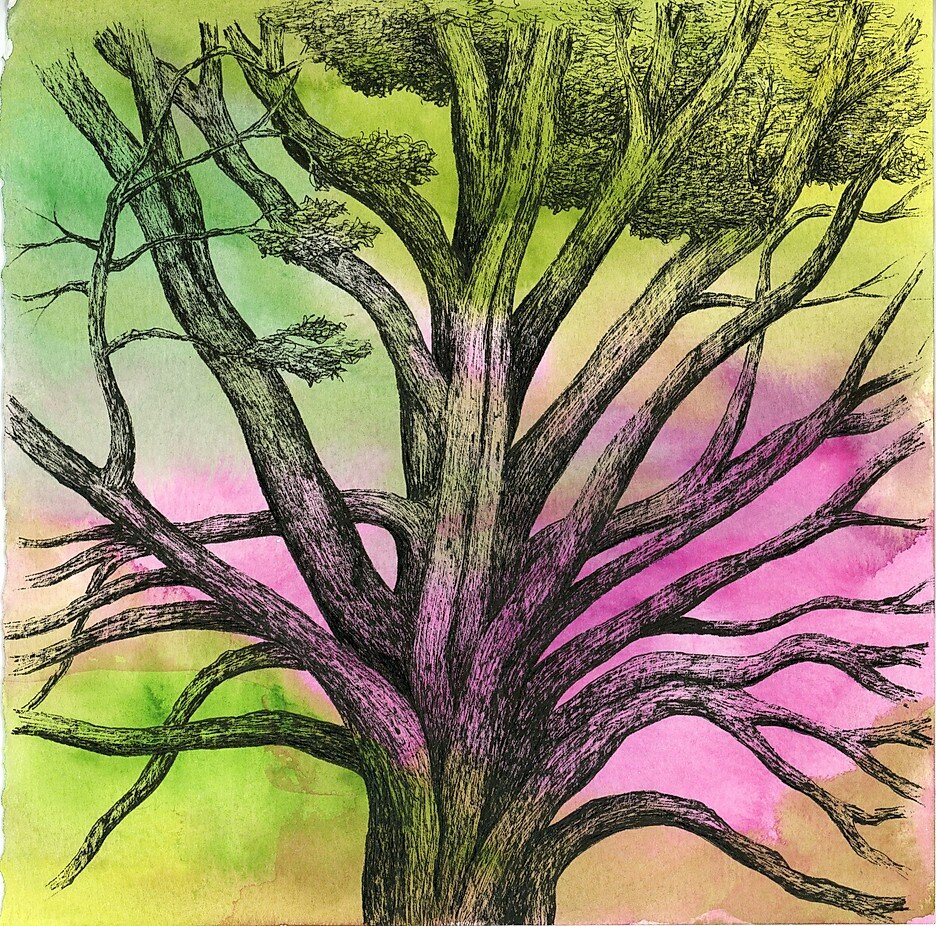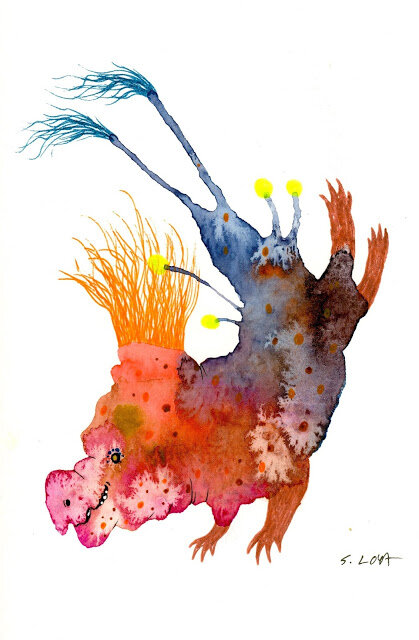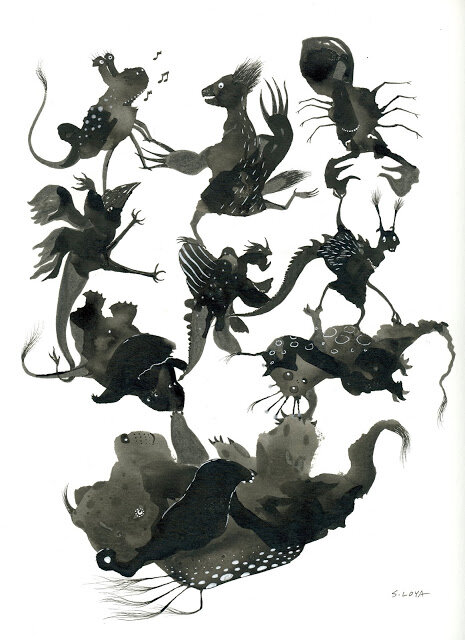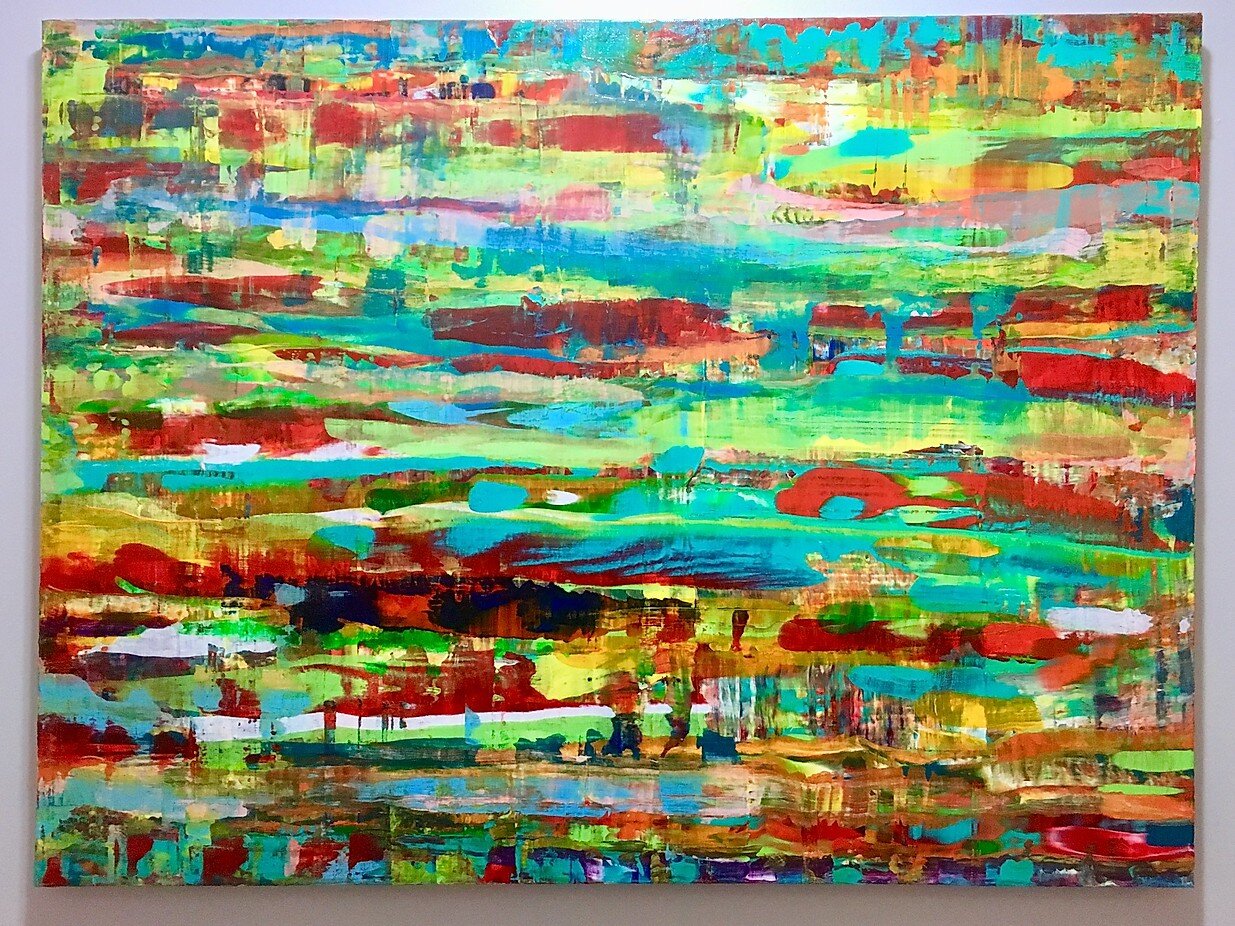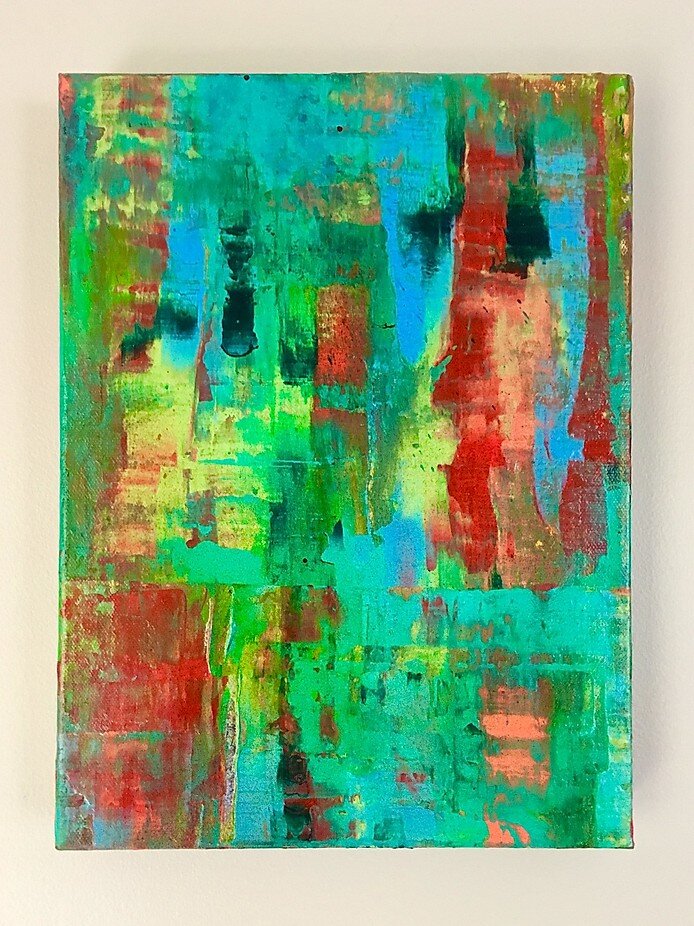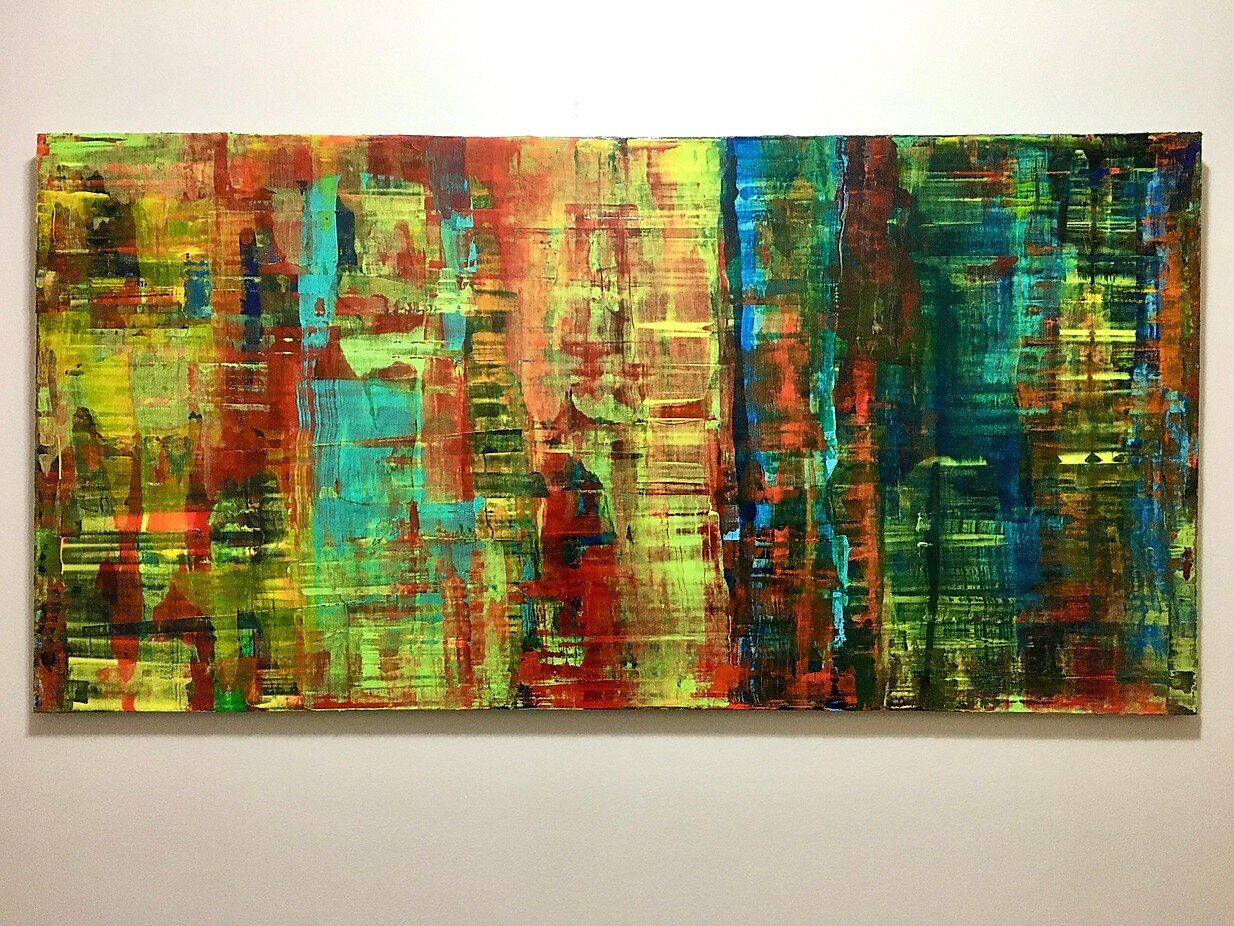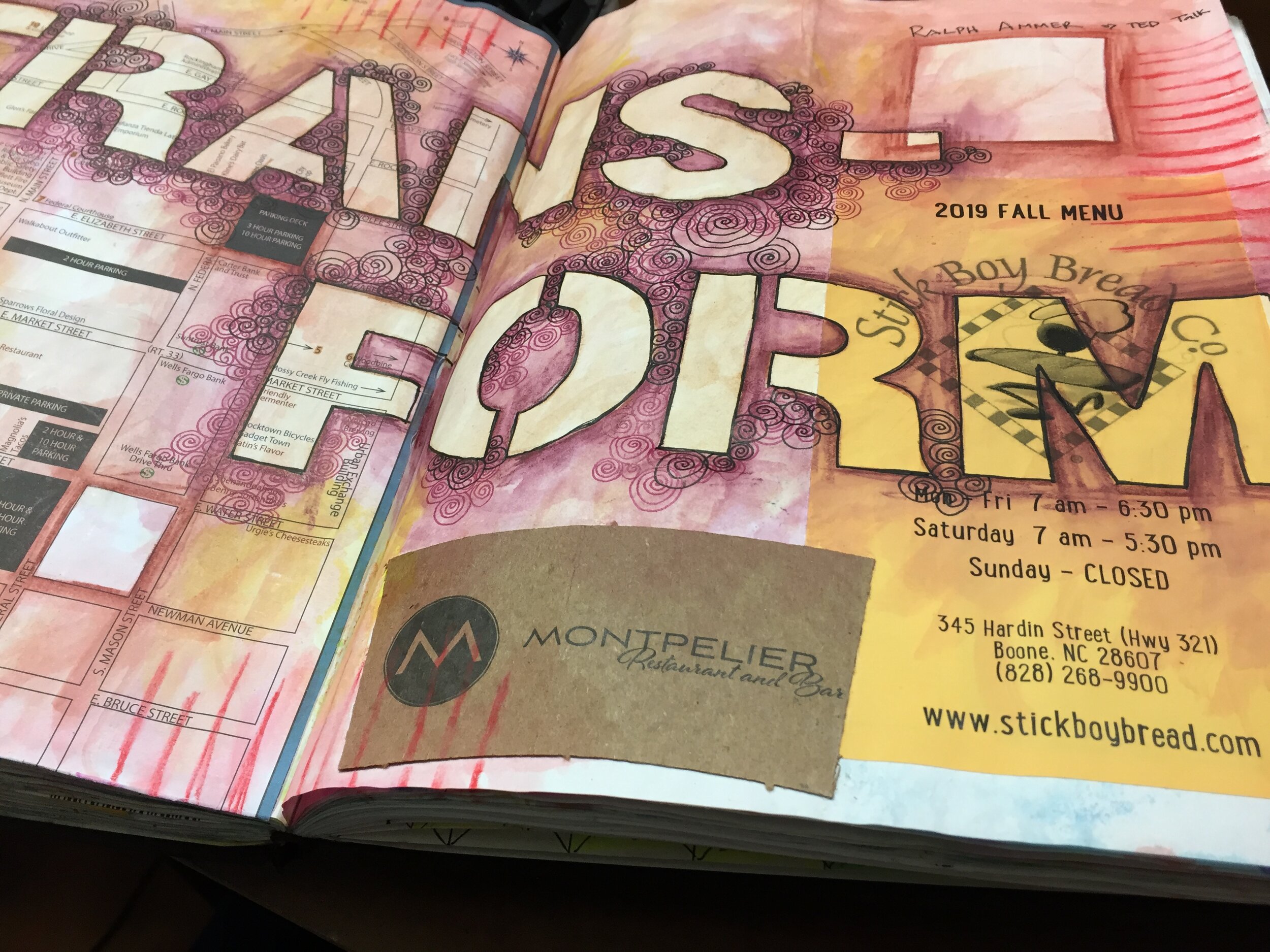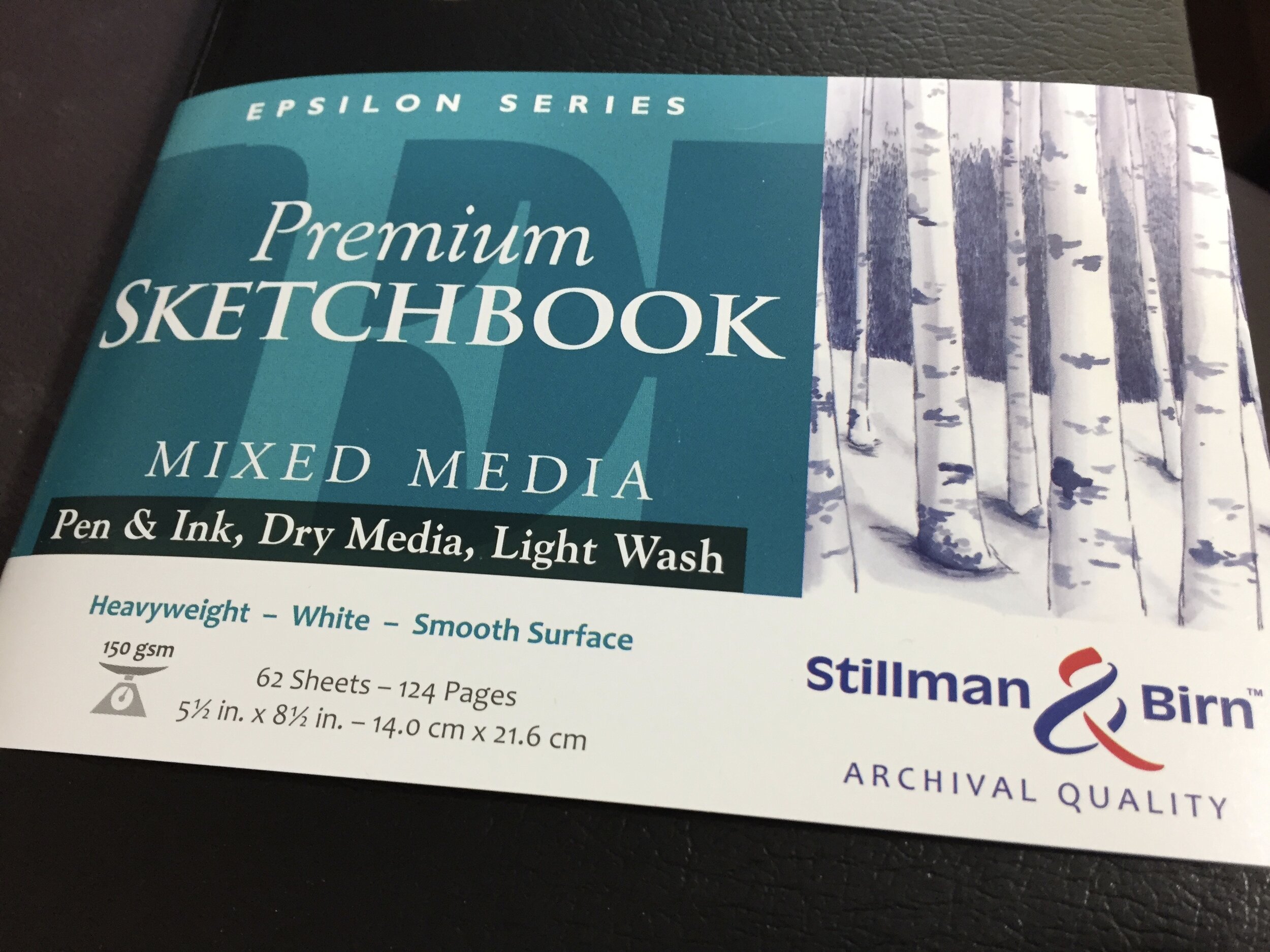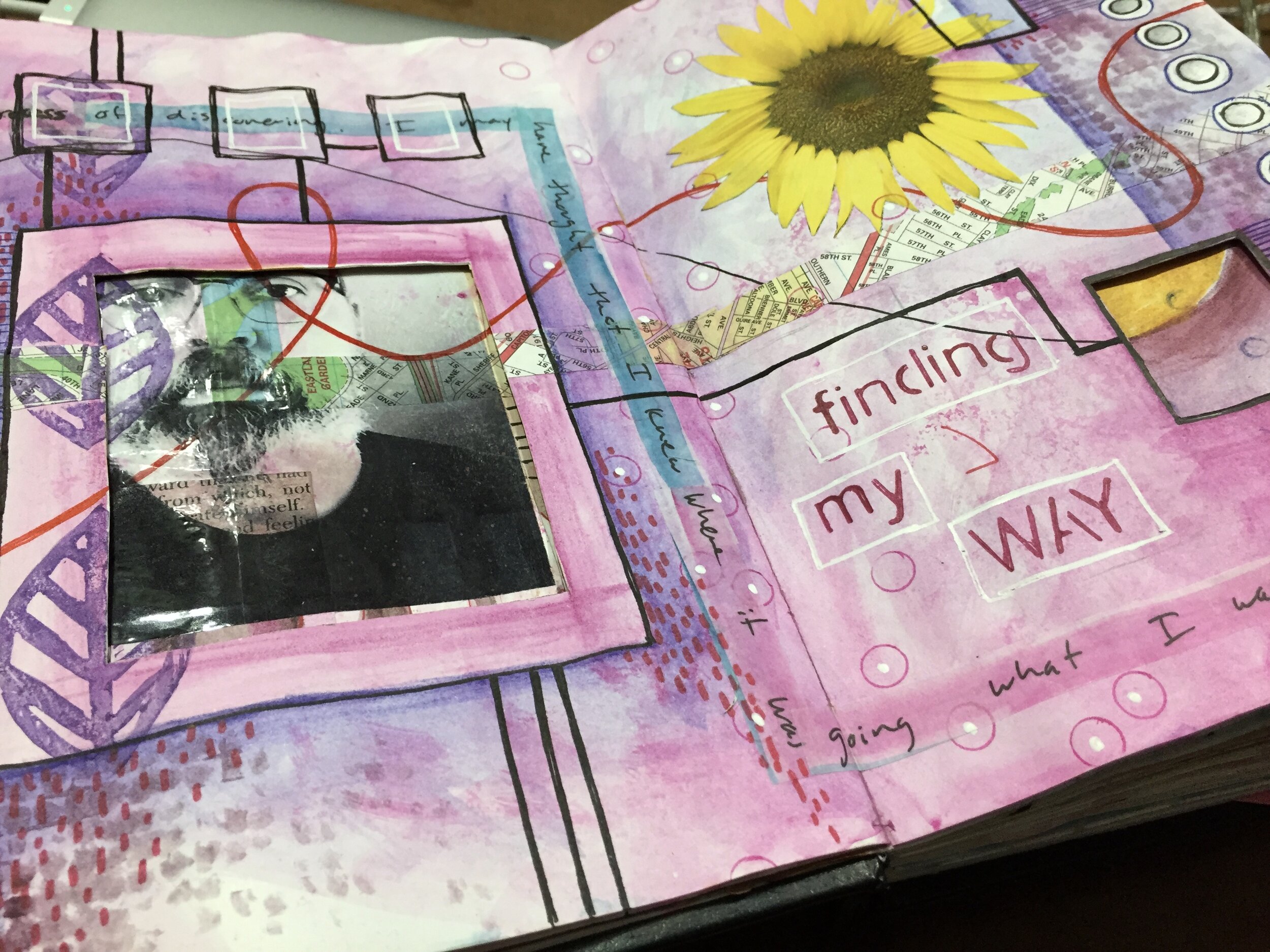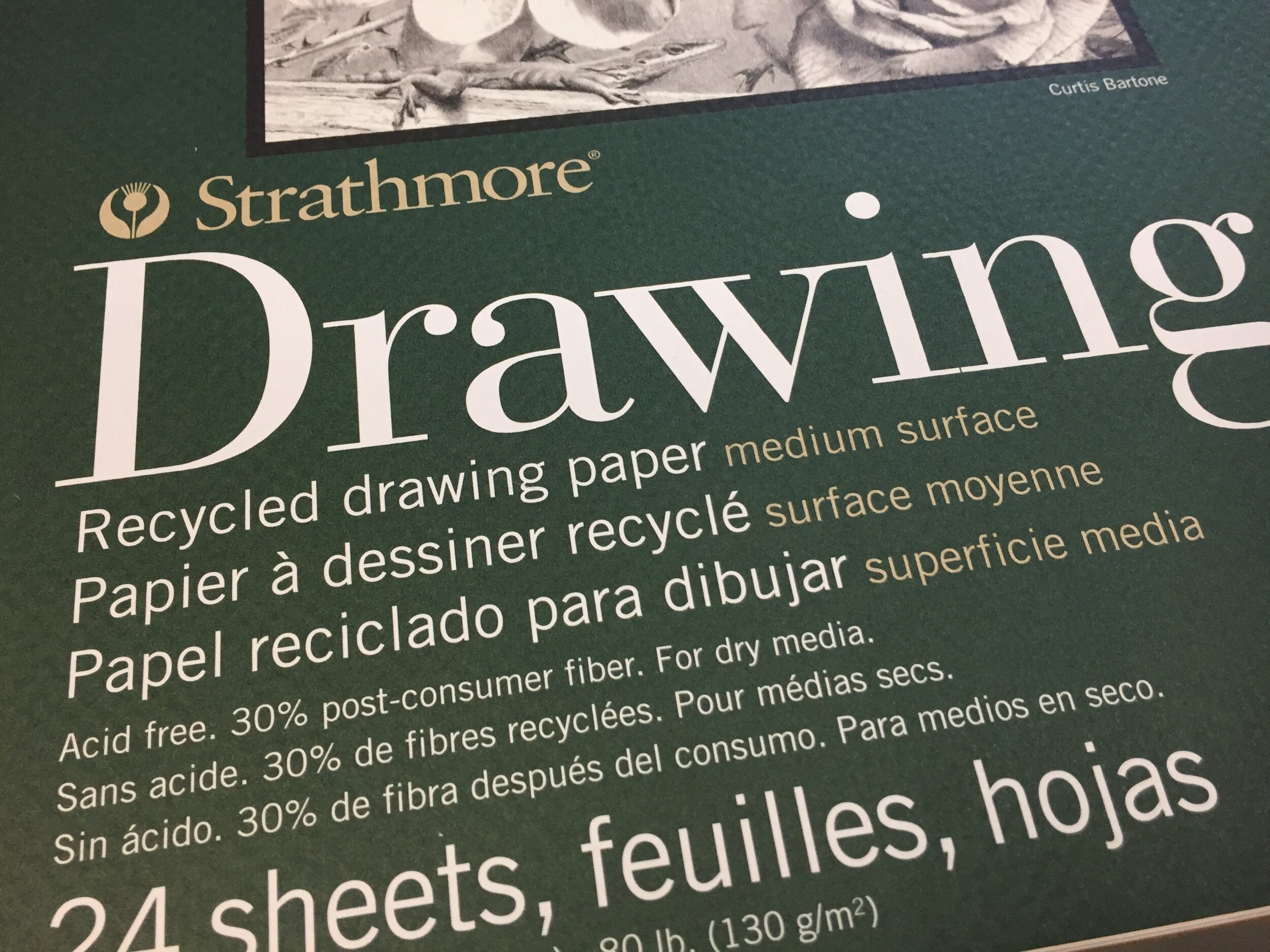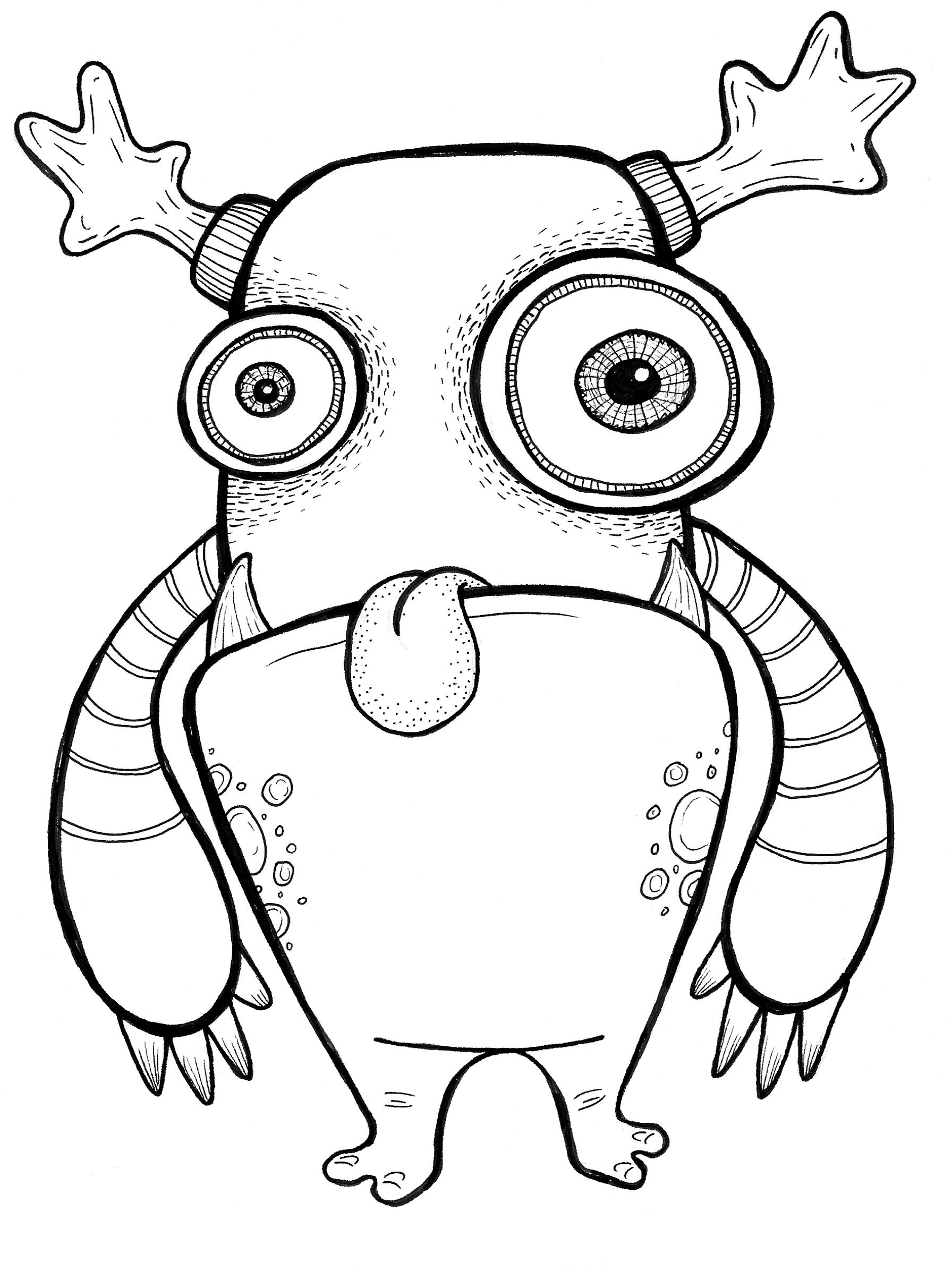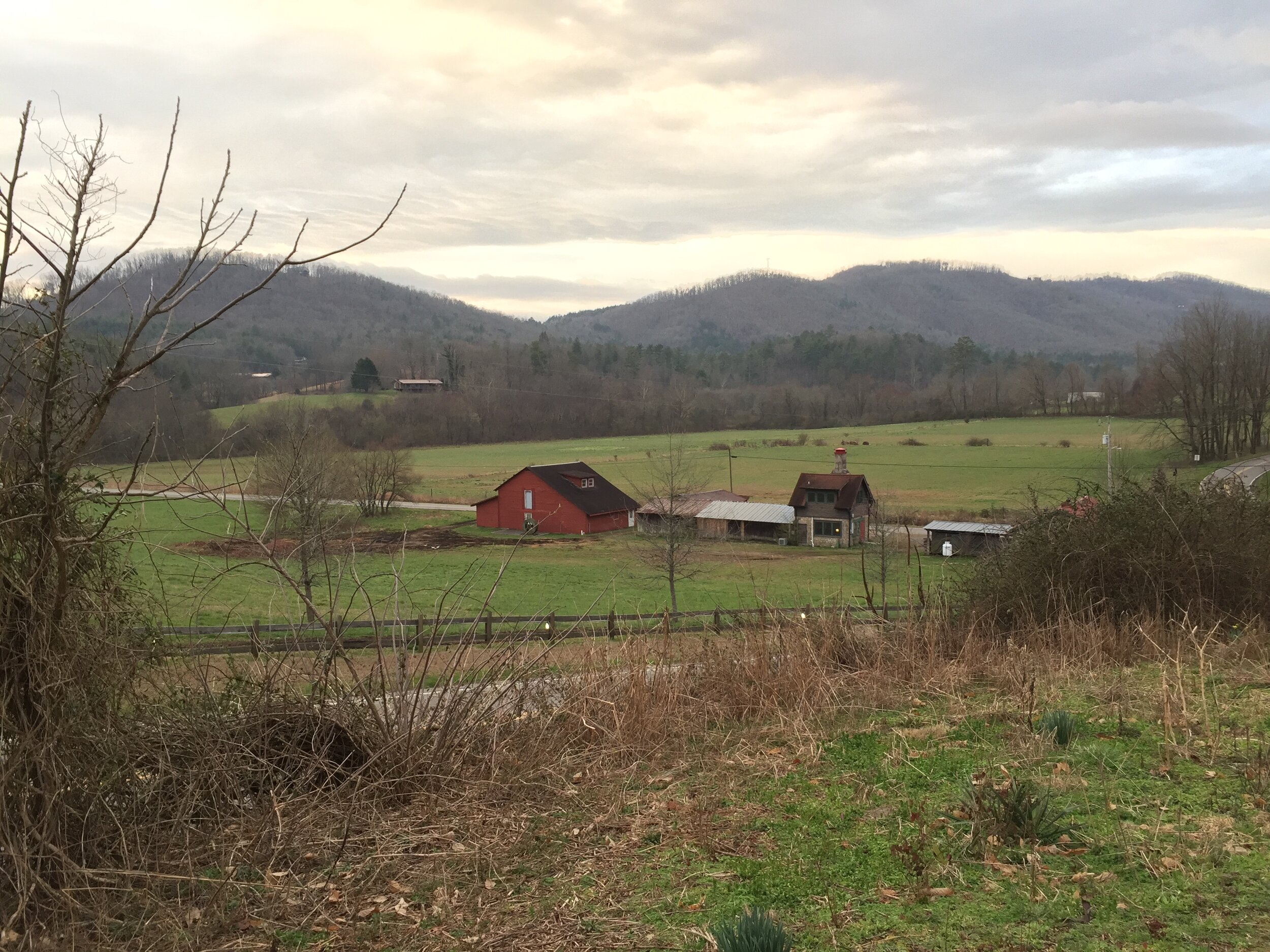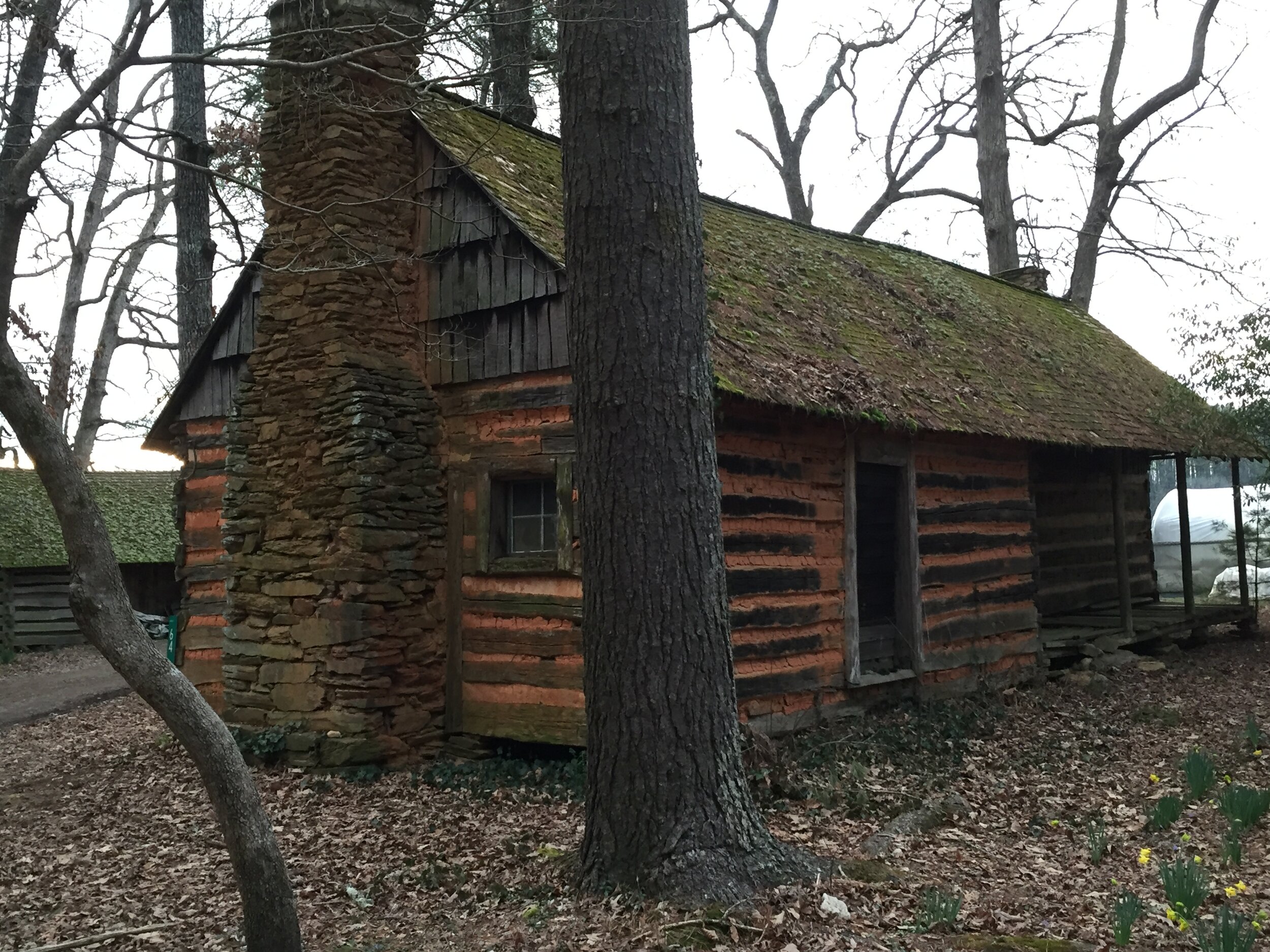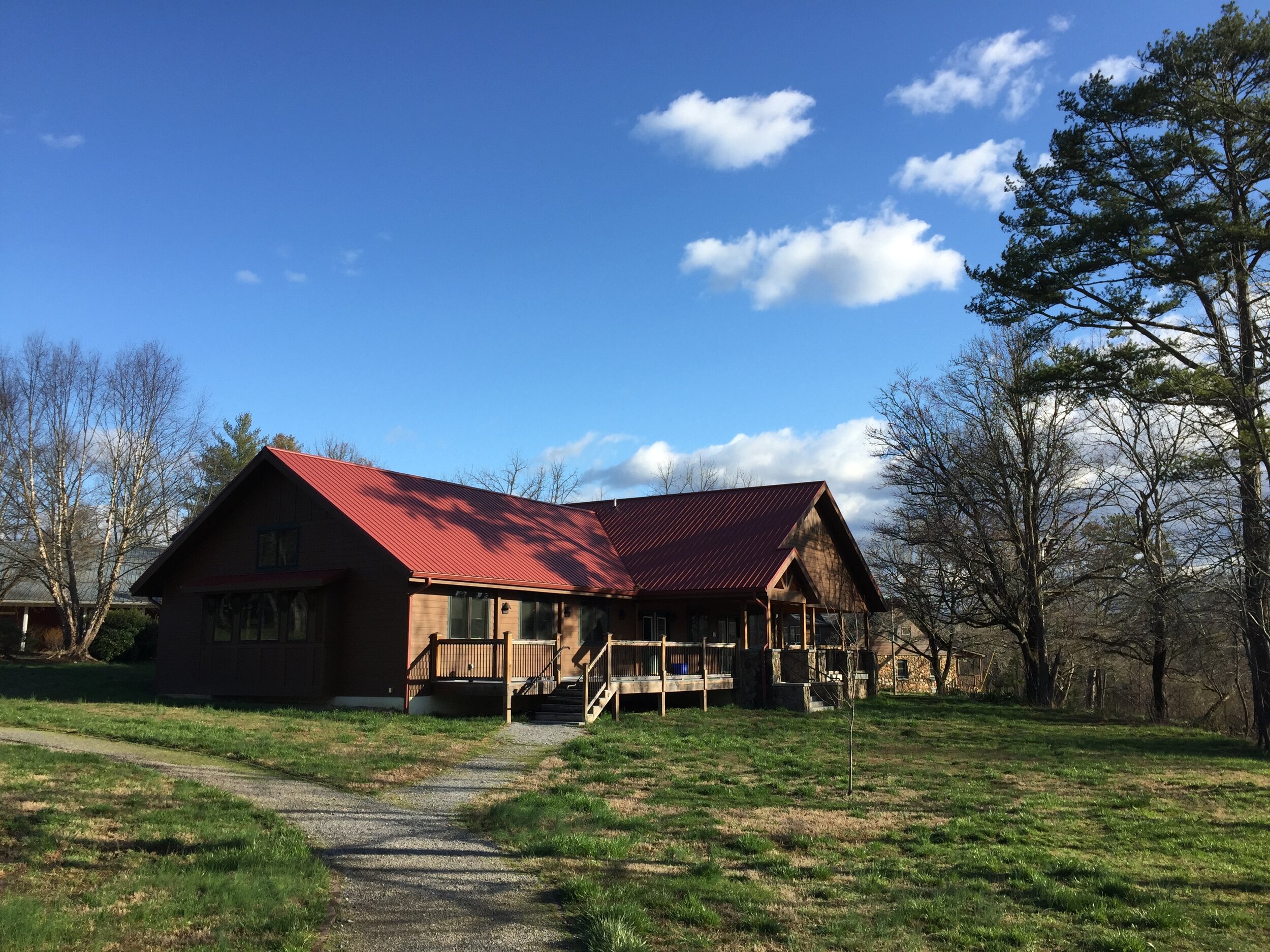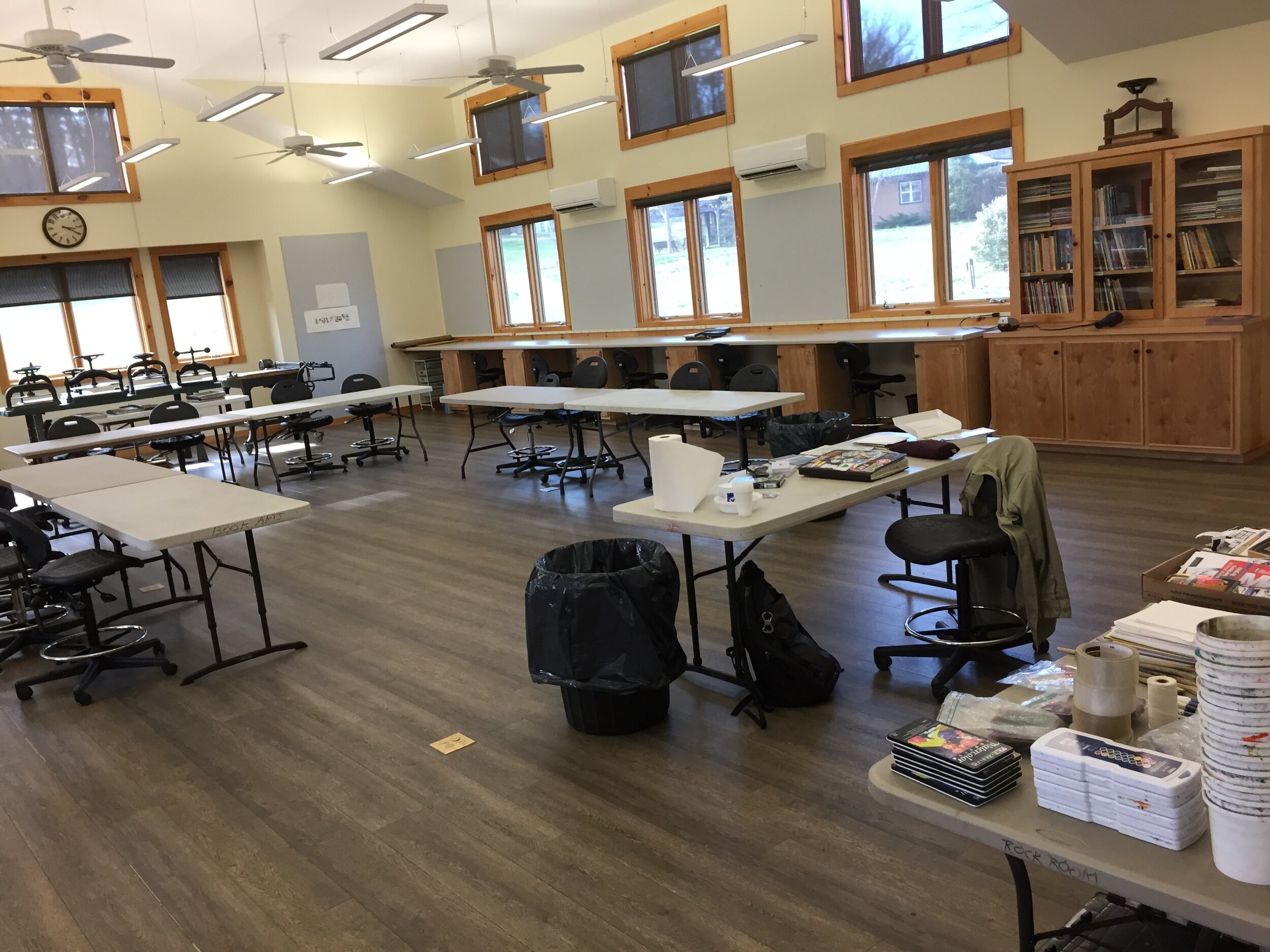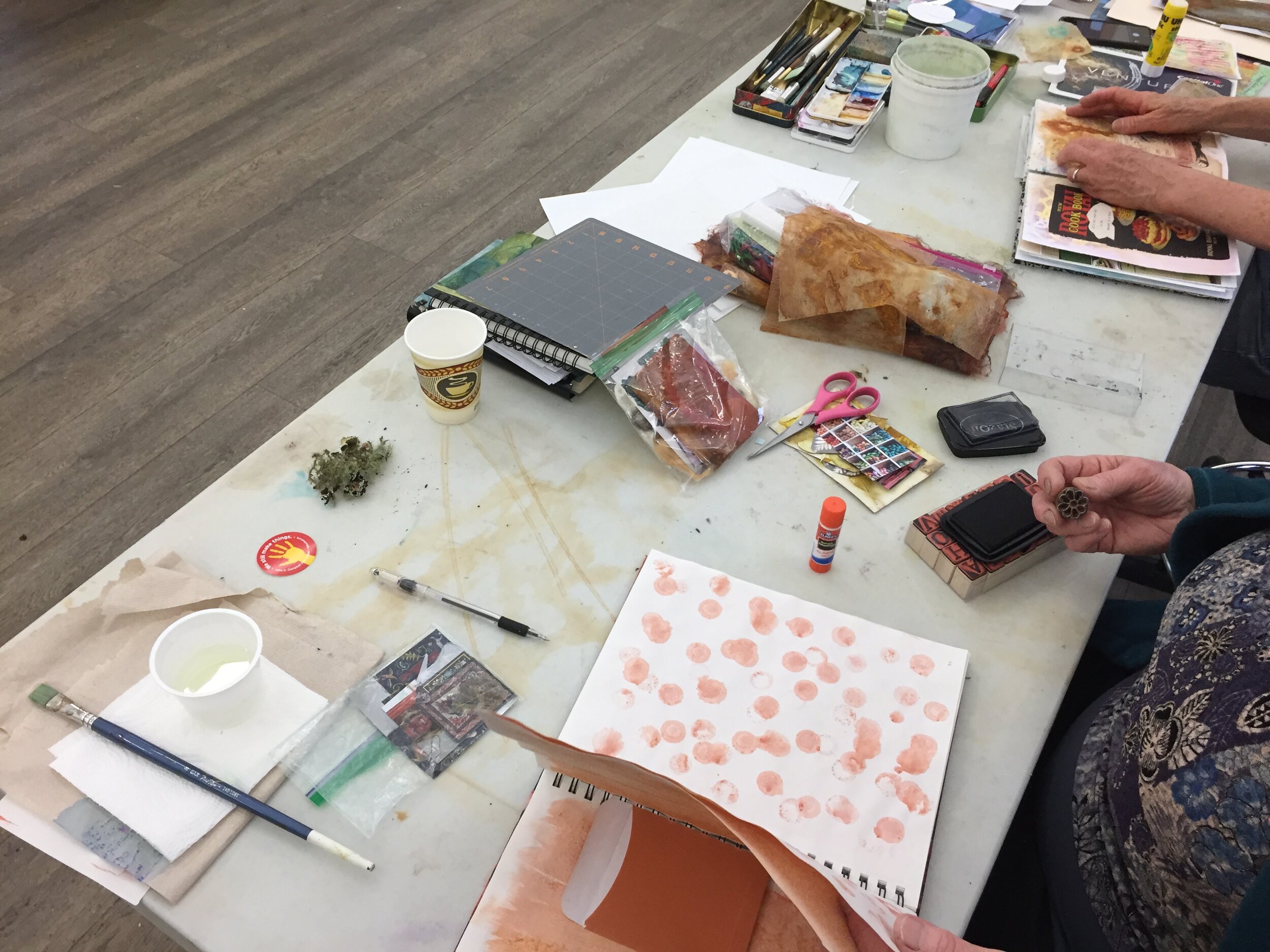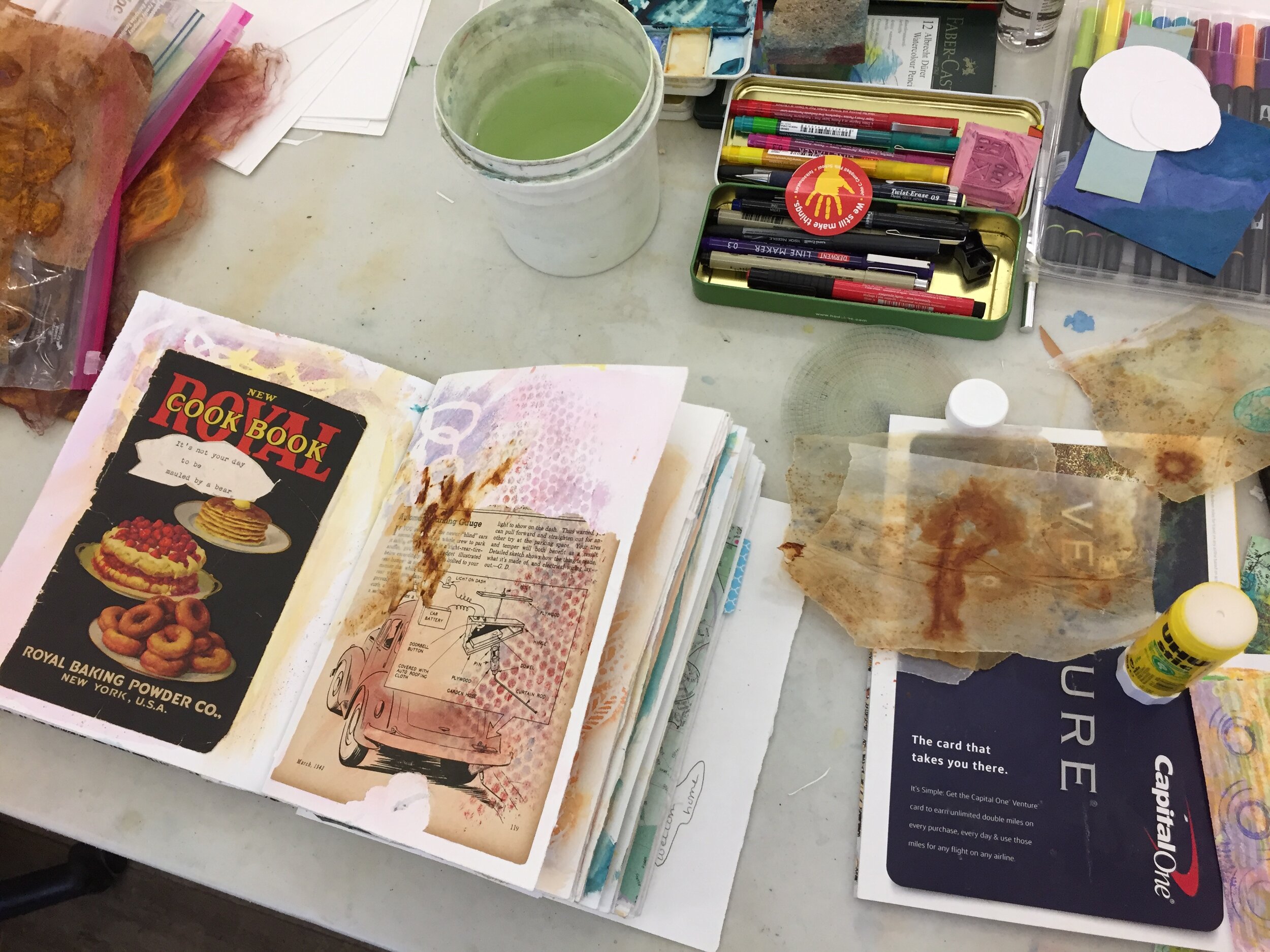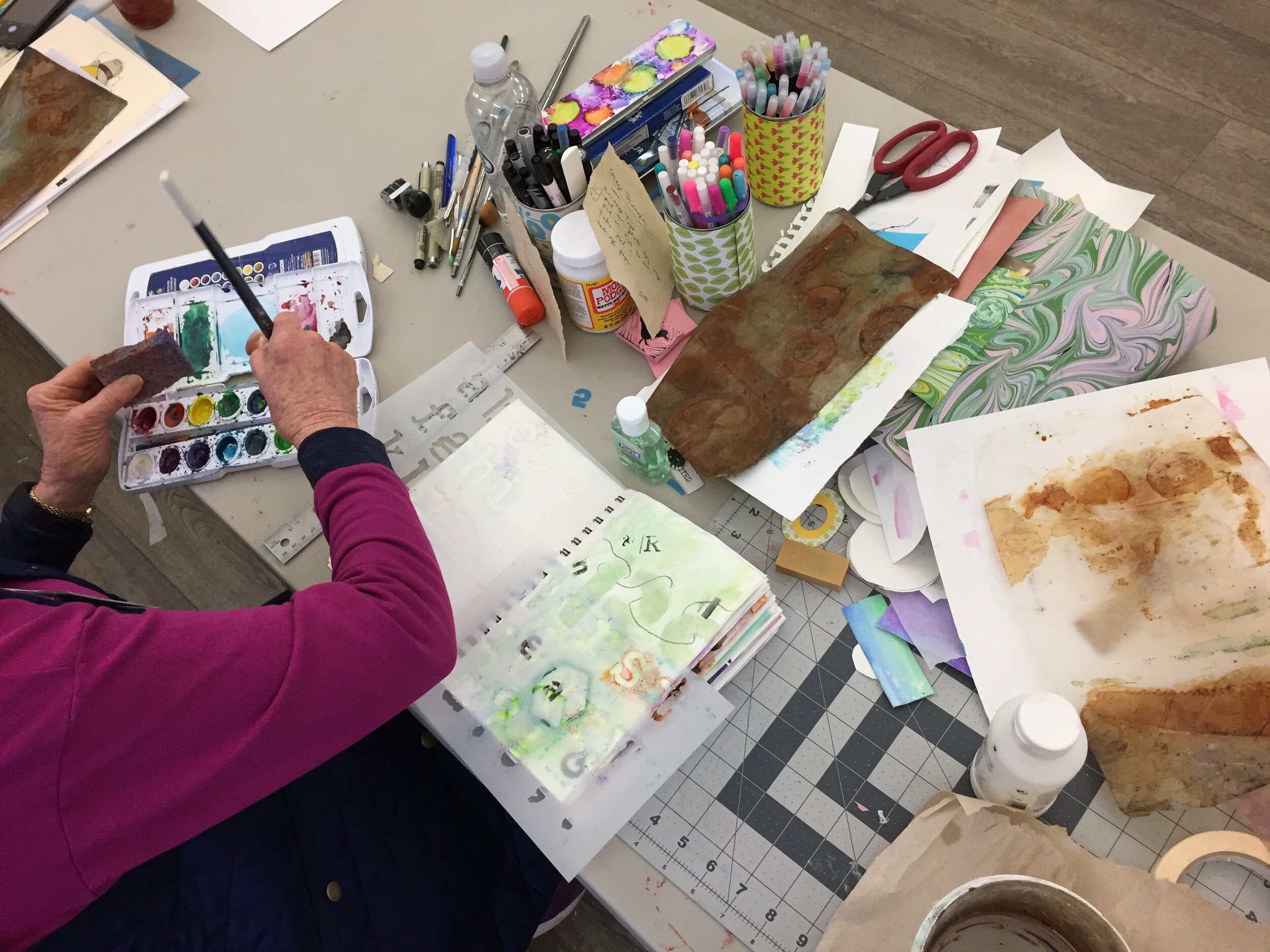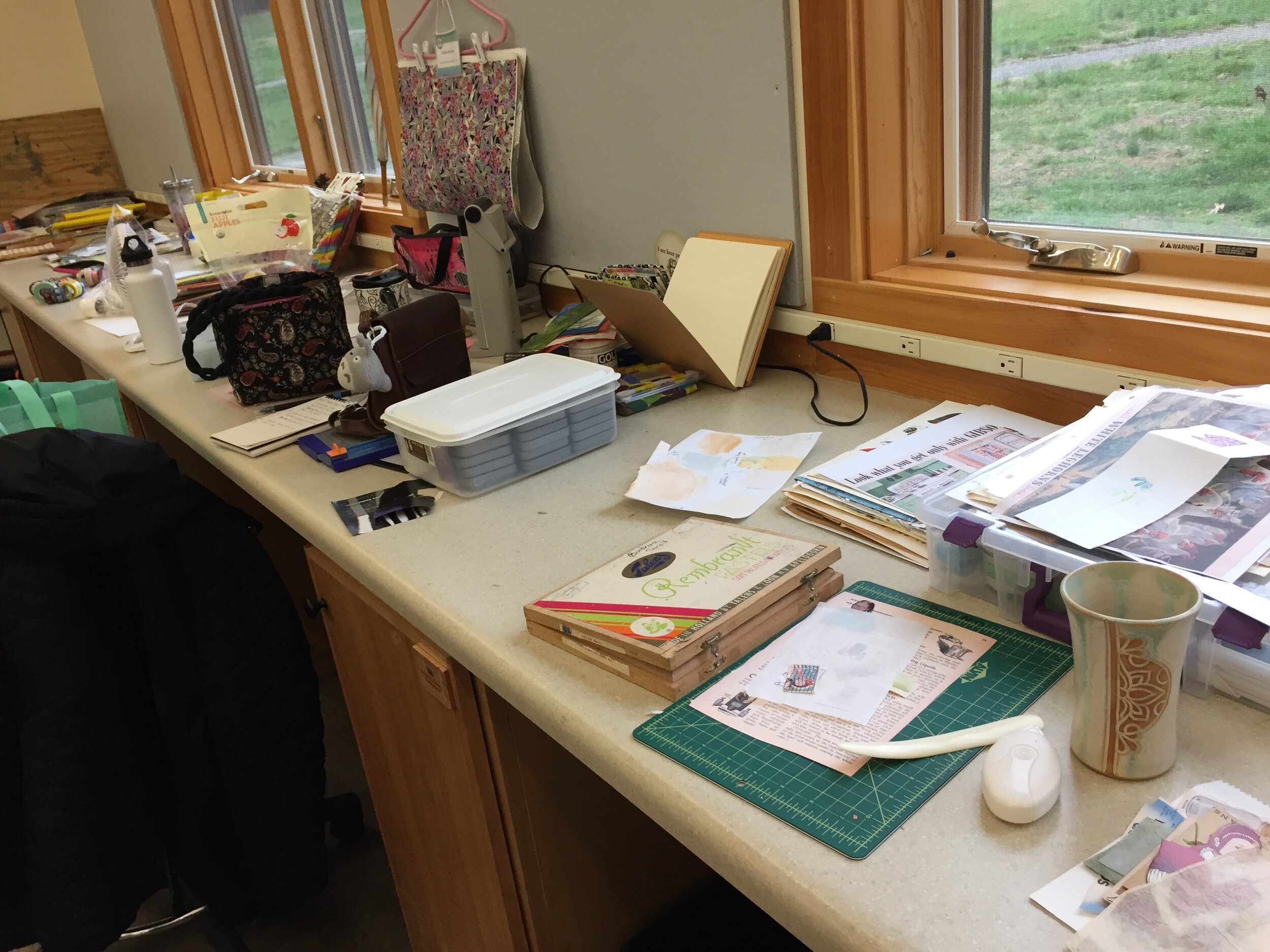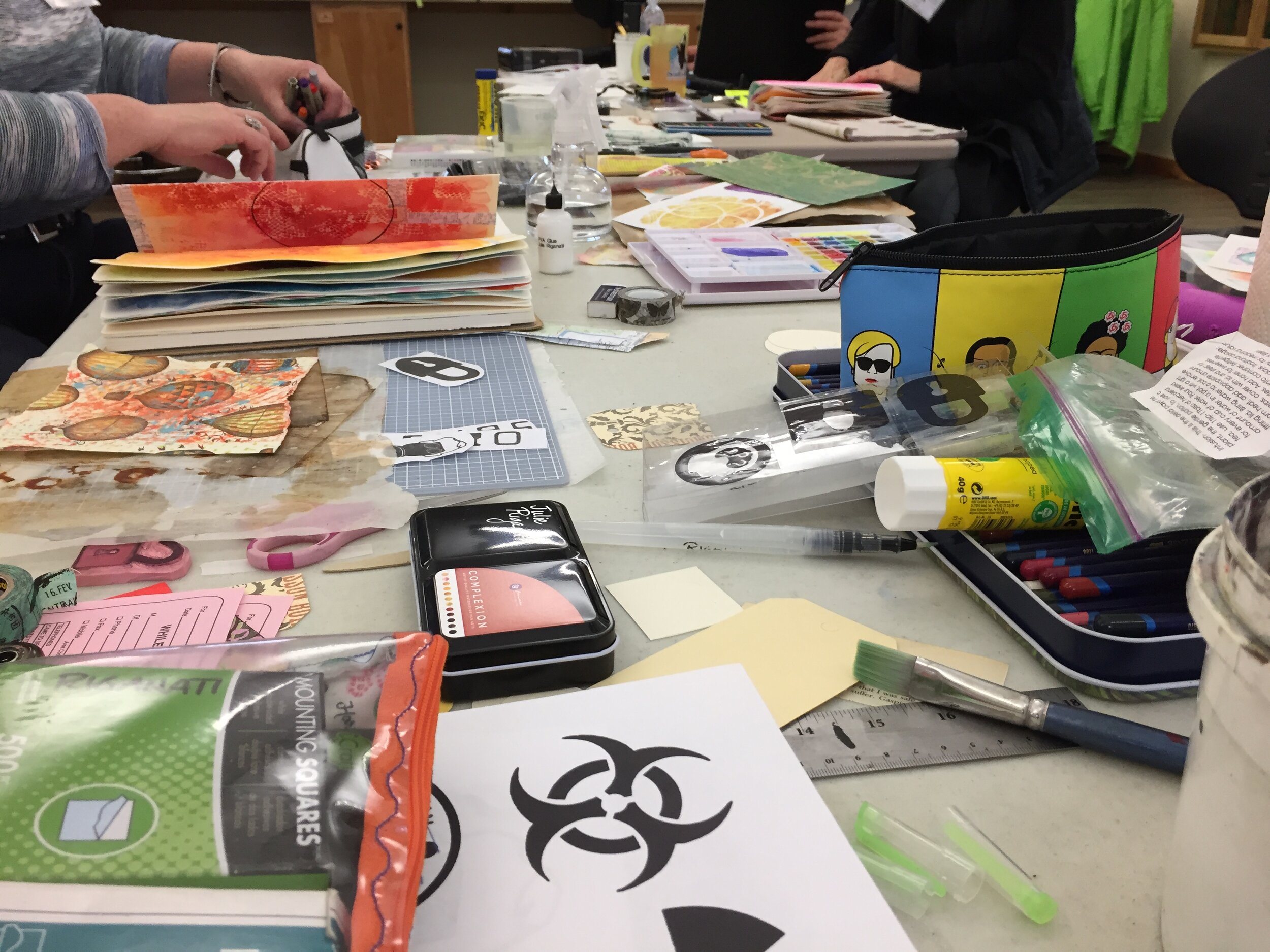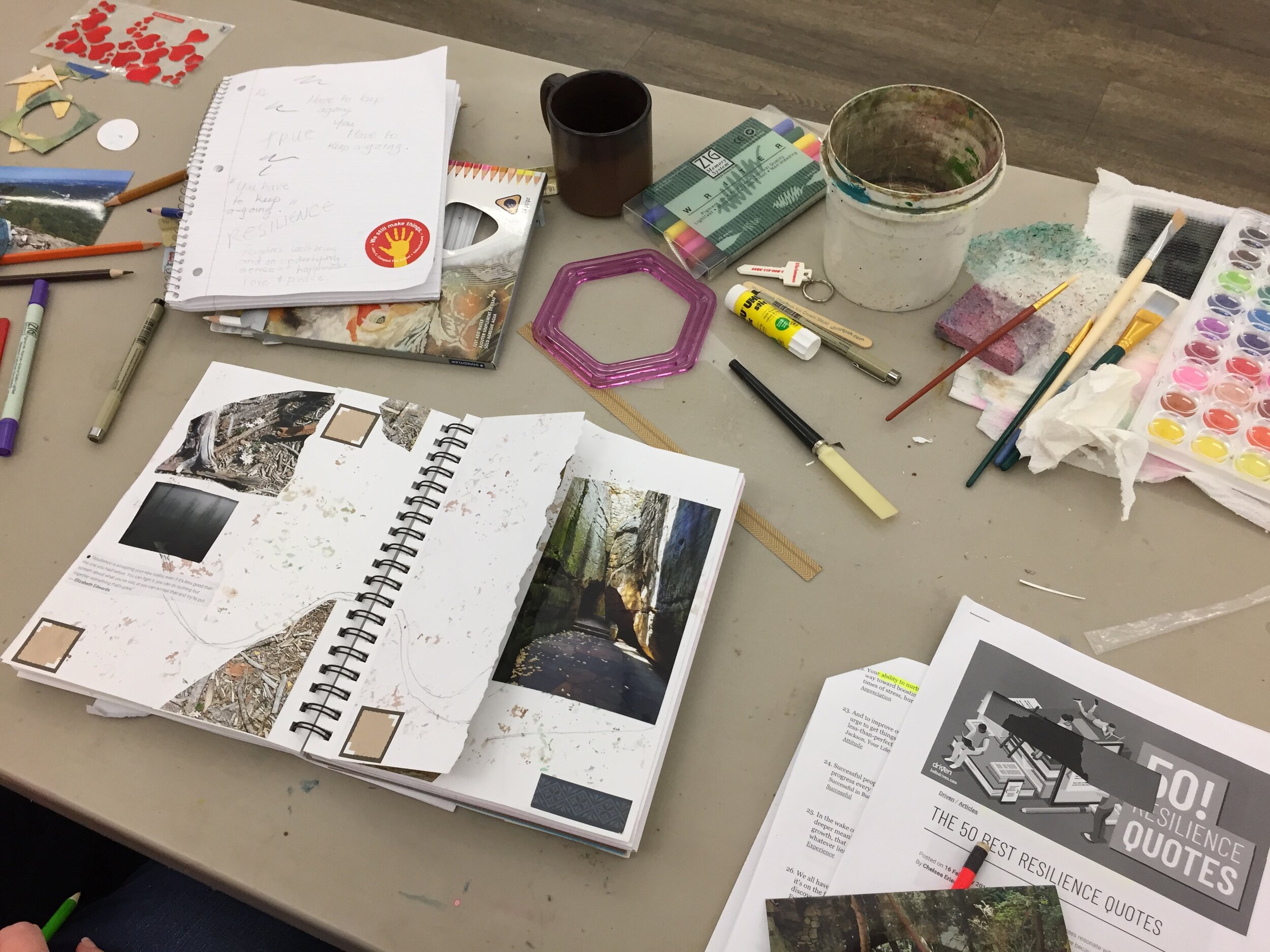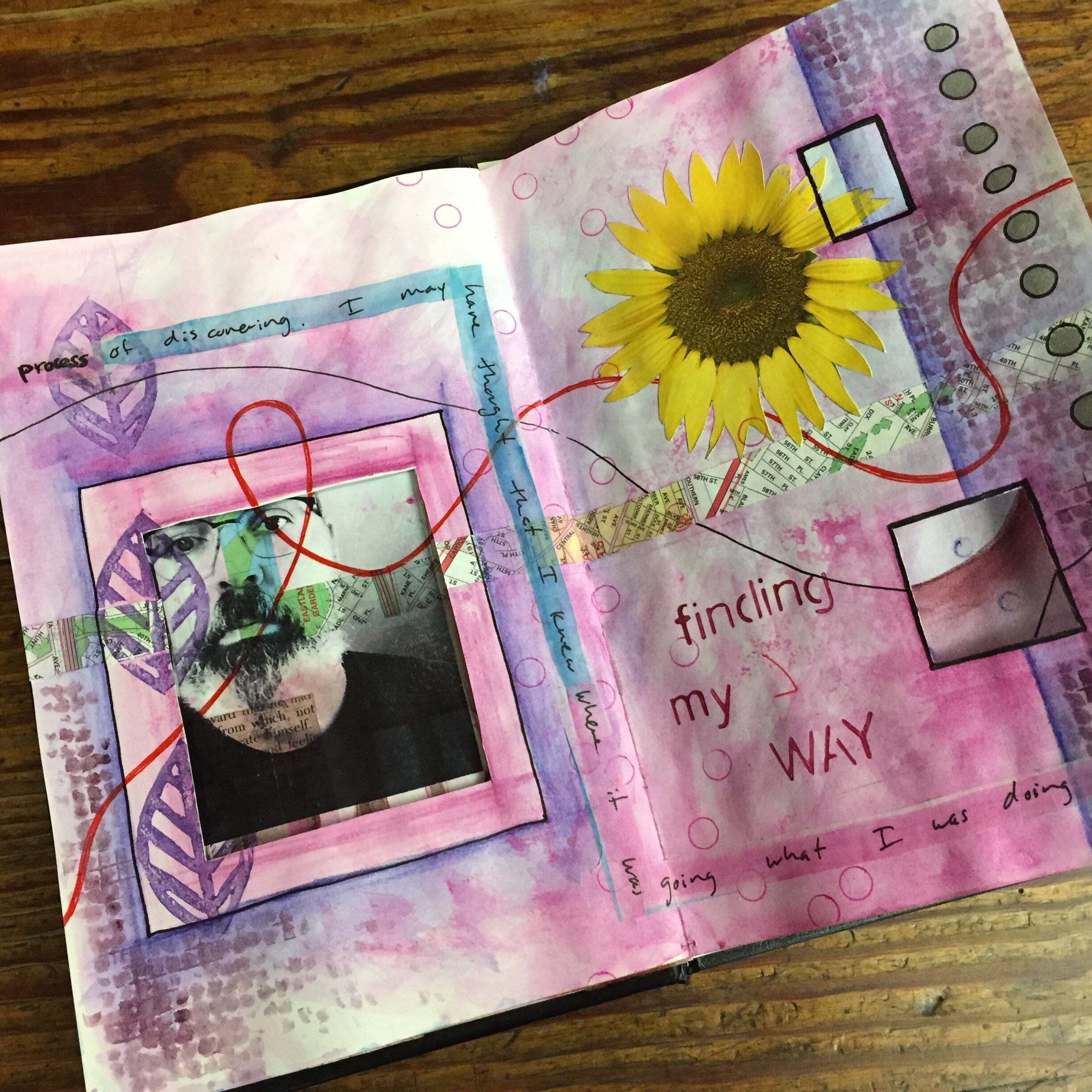For this week’s Amplify, I wanted to feature another good friend of mine and wonderful artist, Erin Keane.
Erin is an encaustic and book artist who lives just outside of Asheville, North Carolina. Originally from Cincinnati, Ohio, Erin moved to western North Carolina originally as an art teacher and spent many years teaching middle school art in Brevard, just southwest of Asheville.
I first met Erin more than a decade ago when she took part in a five-day seminar that I was teaching with my fellow Journal Fodder Junkie David Modler at the North Carolina Center for the Advancement of Teaching in Cullowhee, NC. Like many art teachers, Erin had lost touch with her own art and wanted to reconnect with it. Dave and I were teaching about the visual journal, and it fit well into this drive to get back to her art. Erin and I stayed in touch over the next several months by working in a collaborative journal. We mailed a small sketchbook back and forth and took turns adding to the pages in a completely collaborative way as a way of inspiring each other and keeping the artmaking going. Check out the images below.
Erin eventually left teaching in the public schools and began pursuing her art full time. She apprenticed with a local book artist and fell in love with bookbinding, and around the the same time she discovered the art of encaustic. These two art forms would be separate veins of her work for awhile, but eventually Erin brought the two together and began to create encaustic journals and sculptural books.
Here are a couple of her sculptural designs.
In her encaustic work, Erin uses photography as the basis of her pieces, but she doesn’t just snap images of objects or scenes. She captures reflections in windows or employs purposeful camera motion to blur and distort the image. Erin says about her process, “I am especially interested in elasticity of light as it dances around reflection, shadow, and motion.” Once she captures a number of images, she prints them and transfers the ink of the prints to wood panels. Then the magic happens! She covers the transferred photos with layers of encaustic beeswax giving the final image a softness and a unique glow of saturated color.
Check out some of Erin’s encaustic work below. The photos don’t do the work justice, and they really need to be seen in person.
Erin’s bookbinding ranges from practical journals meant to be drawn, written, or worked in to journals meant to be stand alone works of art in and of themselves. She has also begun exploring bookmaking in sculptural terms creating complex structures that explore a variety of configurations and conceptual considerations.
Here are a couple of Erin’s functional journals.
Along with creating work, Erin exhibits her art widely, and is represented by several galleries in western North Carolina including 310 ART, The Gallery at Flat Rock, Penland Gallery, The Bascom, and Southern Highland Craft Guild. She also shares her artistic process in a variety of classes and workshops throughout western North Carolina and beyond.
Erin has been a big inspiration to me over the years, and watching her transition from art teacher to self-sustaining artist really inspired me in my own journey as I made the decision to leave teaching in the public schools and pursue my own art. I love being a witness to journey of other artists, and I have been awed over the years as I’ve watched Erin’s. I hope that you enjoy her work as much as I do, and if you’re ever in or around Asheville, NC, make sure to check out her work in person.
Find out more about Erin and see more of her wonderful art on her website and social media channels.
Website: www.erinkeane.com
Facebook: www.facebook.com/ErinKeaneStudio
Instagram: www.instagram.com/erinbeankeane
